Did you know there are over 14,000 known species of mushrooms, and more than 2,000 of them are edible? However, when you visit your local grocery store, you’ll likely find only white button mushrooms. We’re here to explore the world of specialty mushrooms, the gourmet species that are so different and delicious, and so much more interesting flavor and texture-wise than simple button mushrooms.
Of those 2,000 edible species, only a small fraction are considered good edible species. Many mushrooms are technically edible but not worth eating because they don’t taste great or they’re too insignificant to collect. But, even if you only focus on the top 50 edible species, that’s lots more than you’ll find at your local grocery store. Button mushrooms dominate 60% of the global mushroom market, which is sad when there are so many more mushrooms out there to eat!
Specialty mushrooms offer exciting flavors and textures beyond the common button variety. These gourmet mushrooms, such as maitake and chanterelles, have so much to offer. They are usually quite a bit pricier, but they’re worth it for their incredible textures and tastes.
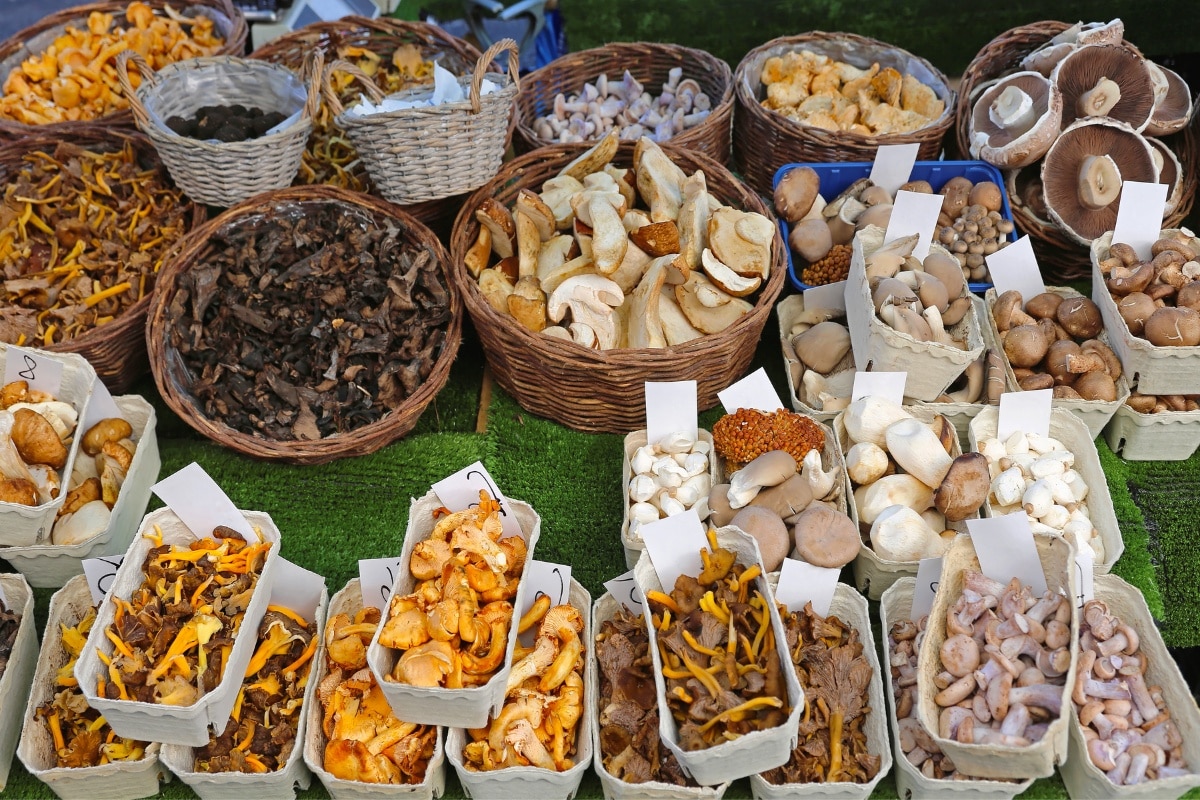
Jump to:
Getting Started with Specialty Mushrooms
So many delicious, unique, and downright special mushrooms are available besides the average button mushroom. If you’re not a fan of mushrooms (because you’ve only had buttons), don’t let that deter you. Most of these specialty mushrooms don’t taste anything like button mushrooms, and most of them also have a different texture (if that’s the issue).
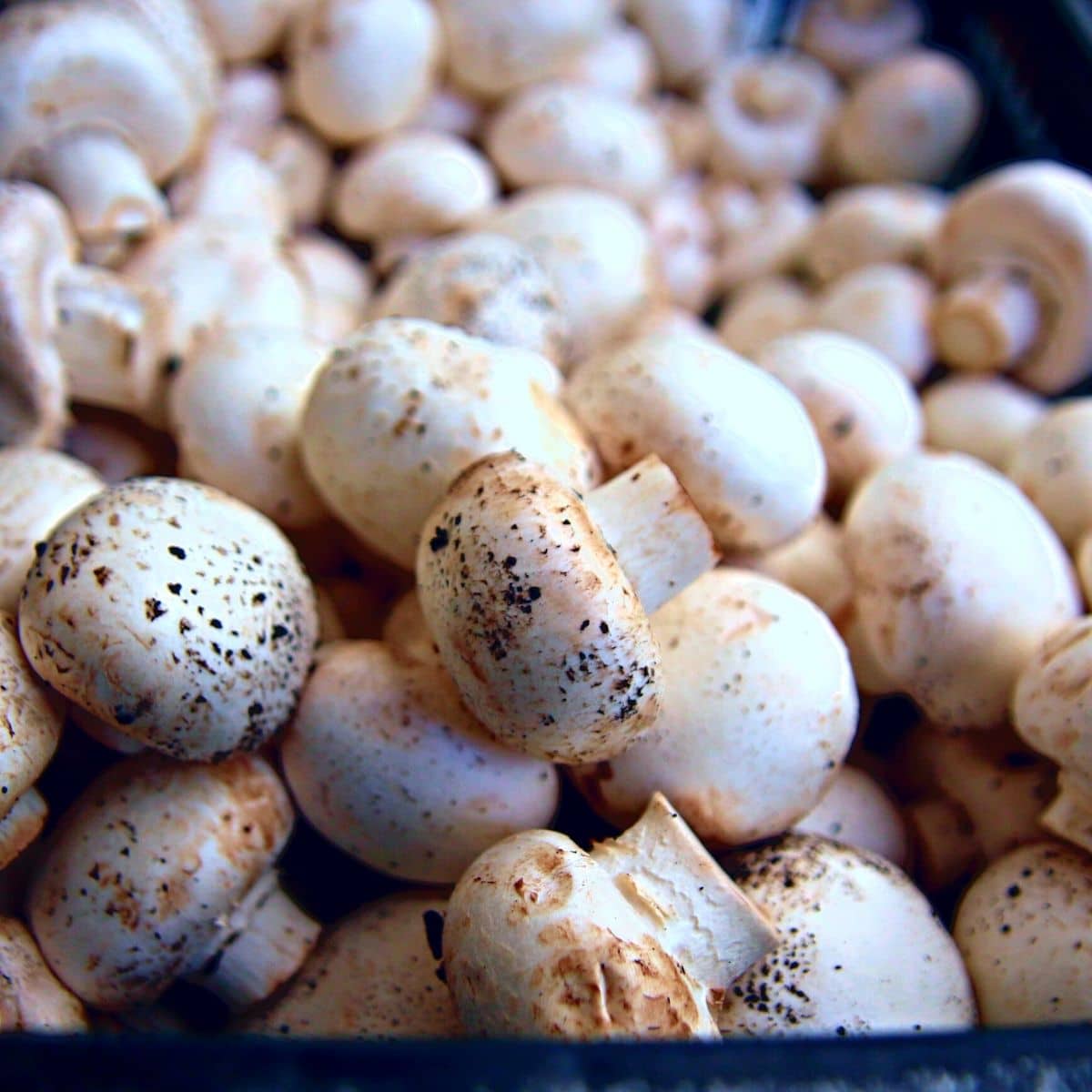
Shiitake mushrooms, known for their rich, earthy flavor and meaty texture, are a popular choice in both Asian and Western cuisines. Oyster mushrooms have a mild, slightly sweet taste that pairs well with a variety of dishes. Then, there are golden chanterelles with a fruity aroma and a peppery flavor profile.
Porcini mushrooms have a strong, nutty flavor and are often sold dried, but you can also find them fresh. The lion’s mane mushroom is an excellent choice. It has a unique, shaggy look and a delicate taste similar to seafood. This mushroom is becoming popular with home cooks and health fans. These gourmet varieties provide a world of flavors and textures beyond the common button mushroom.
The types of wild and specialty mushrooms available to you will vary a lot by where you’re located. Some cities and towns have excellent selections of specialty mushrooms, while others barely have any. A good place to look besides the regular grocery store is Asian markets. They usually have a much better and more varied selection, often at great prices. If you have a local farmer’s market, check there too. Many farmer’s markets have farmers selling specialty mushrooms they’re grown.
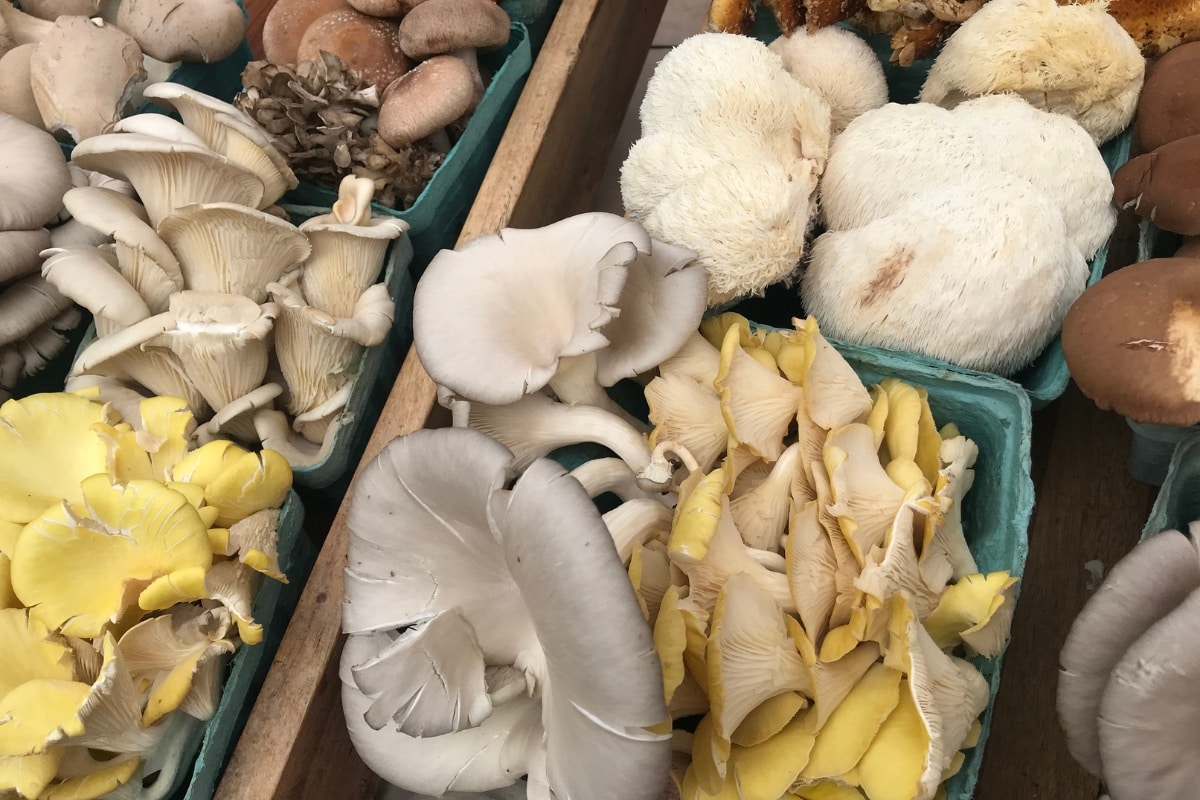
Due to the increased interest in specialty mushrooms, you’re much more likely to encounter them nowadays (thank goodness!). If you can’t find any varieties beyond button mushrooms, though, there are options. You can learn how to mushroom forage and gather your own gourmet mushrooms. Or, you can get a grow kit and grow your own. The second option is quicker, of course. But the first option is a lot of fun, and it’s free.
How To Choose and Store Gourmet Mushrooms
When selecting high-quality specialty mushrooms, look for these things:
- Appearance: Look for mushrooms with vibrant, consistent coloring and smooth, unblemished caps. Fresh mushrooms should be free from dark spots or discoloration.
- Texture: Press gently on the cap – it should feel firm and solid, not spongy or overly soft. The stems should be firm, notably free from any mushy spots. However, this will depend on the species, as some are more spongy than others.
- Moisture: Fresh mushrooms should feel relatively dry to the touch. Avoid any that feel wet or show signs of slime.
Do not clean the mushrooms before storing them. Wait until right before you use the mushrooms. If they go into the refrigerator wet, they’re more likely to spoil quickly.
Store your mushrooms in the refrigerator with adequate air circulation. Put them in a paper bag or loosely wrap them in newspaper. This helps absorb excess moisture so they don’t go slimy and start to mold. Do not store them in sealed plastic containers or plastic bags. This leads to condensation and spoilage. For the best quality, use your mushrooms within a week of purchase.
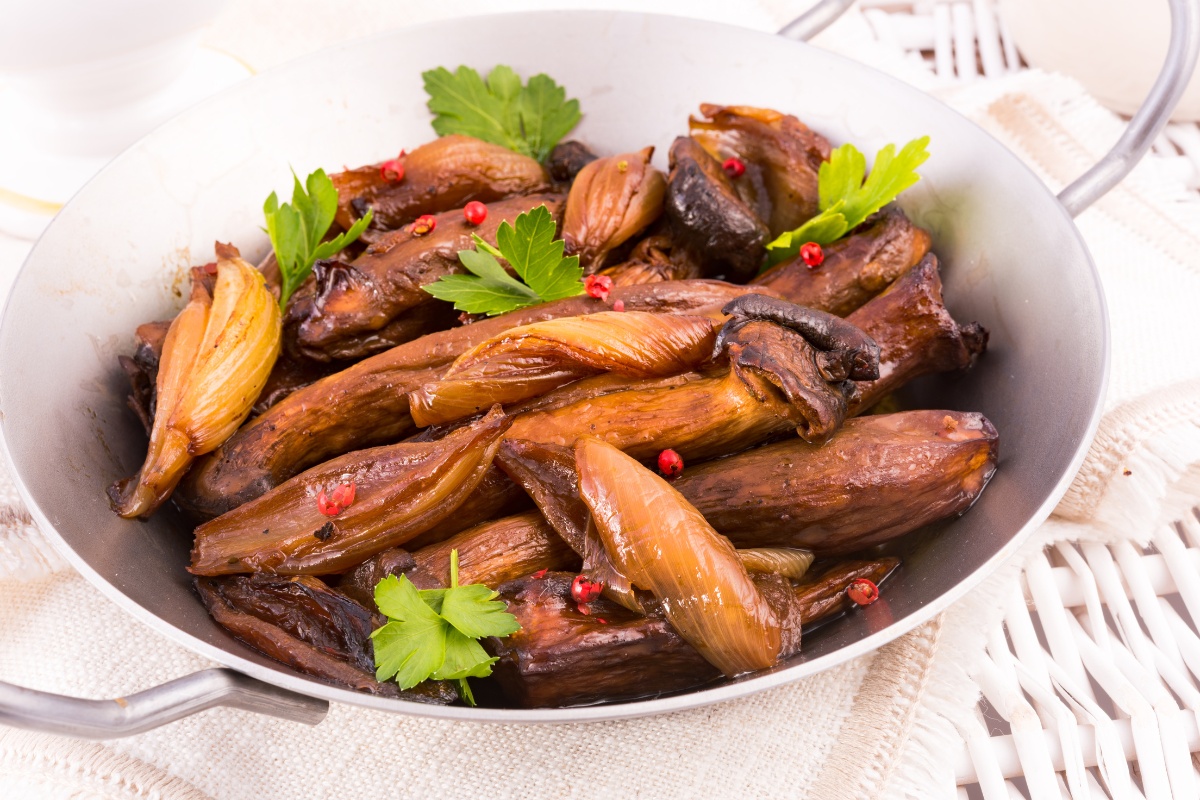
Top 10 Specialty Mushrooms To Cook With
Lion’s Mane
Best For: Faux lobster or crab rolls, pizza topping, pan-frying, stuffed mushrooms, faux steak
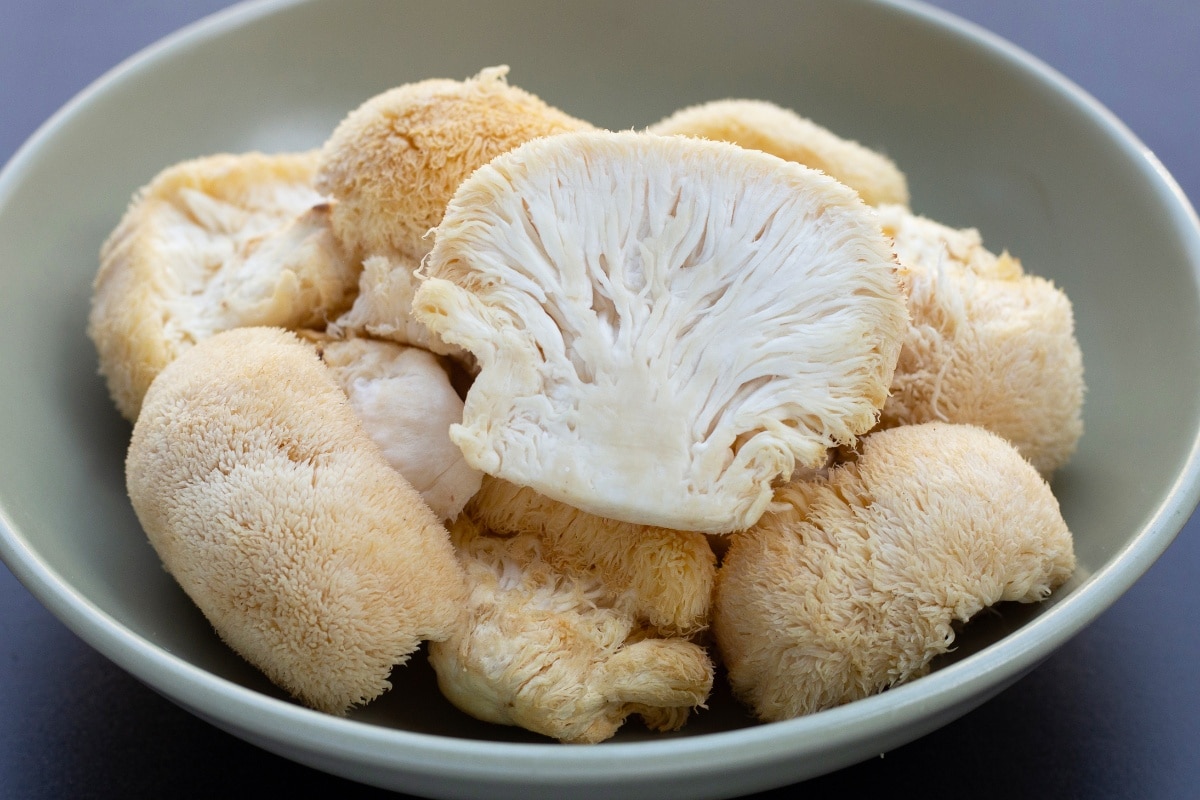
Lion’s Mane is becoming increasingly popular in culinary and health circles. This special mushroom resembles a white, shaggy lion’s mane or a big white, shaggy snowball. Due to its increase in popularity, lion’s mane is becoming more readily available in specialty grocery stores, farmer’s markets, and through online vendors.
Lion’s Mane can be both wild-foraged and cultivated. In the wild, it typically grows on hardwood trees like oak, maple, and beech. However, due to its growing popularity, cultivated Lion’s Mane is becoming the more common option. Many small-scale mushroom farms and hobbyist growers are now cultivating Lion’s Mane.
Lion’s Mane texture and flavor are likened to seafood, particularly crab or lobster. Its meaty texture makes it an excellent meat substitute. Lion’s Mane is a sponge; if you wash or soak the mushrooms, you’ll need to squeeze or drain the excess moisture out before cooking. It’s best to use a wet towel to brush off any dirt so the mushroom doesn’t get waterlogged.
One of the best ways to prepare Lion’s Mane is to turn it into “steaks.” Slice the mushroom into thick slabs and pan-sear them until golden brown. This brings out a delicious, slightly sweet flavor. Lion’s Mane can also be torn into smaller pieces and used in stir-fries, soups, or as a topping for pizzas and salads.
For a simple yet yummy dish, sauté Lion’s Mane in butter with garlic and herbs, then serve it as a side dish or over pasta. It works incredibly as a plant-based alternative in dishes like “crab” cakes or “lobster” rolls. The natural seafood-like qualities make it a perfect substitute.
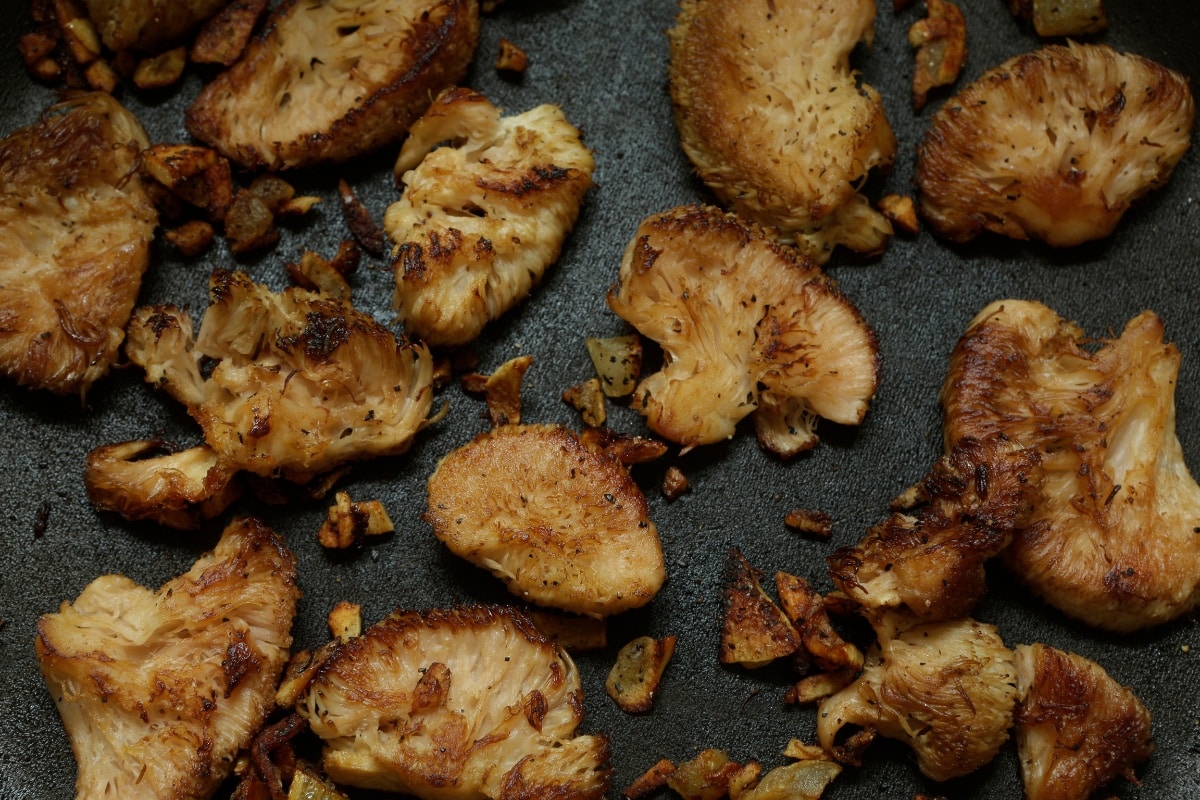
Oysters
Best For: pan-frying, pasta dishes, stews, pizza topping, meat substitute, fritters, jerky
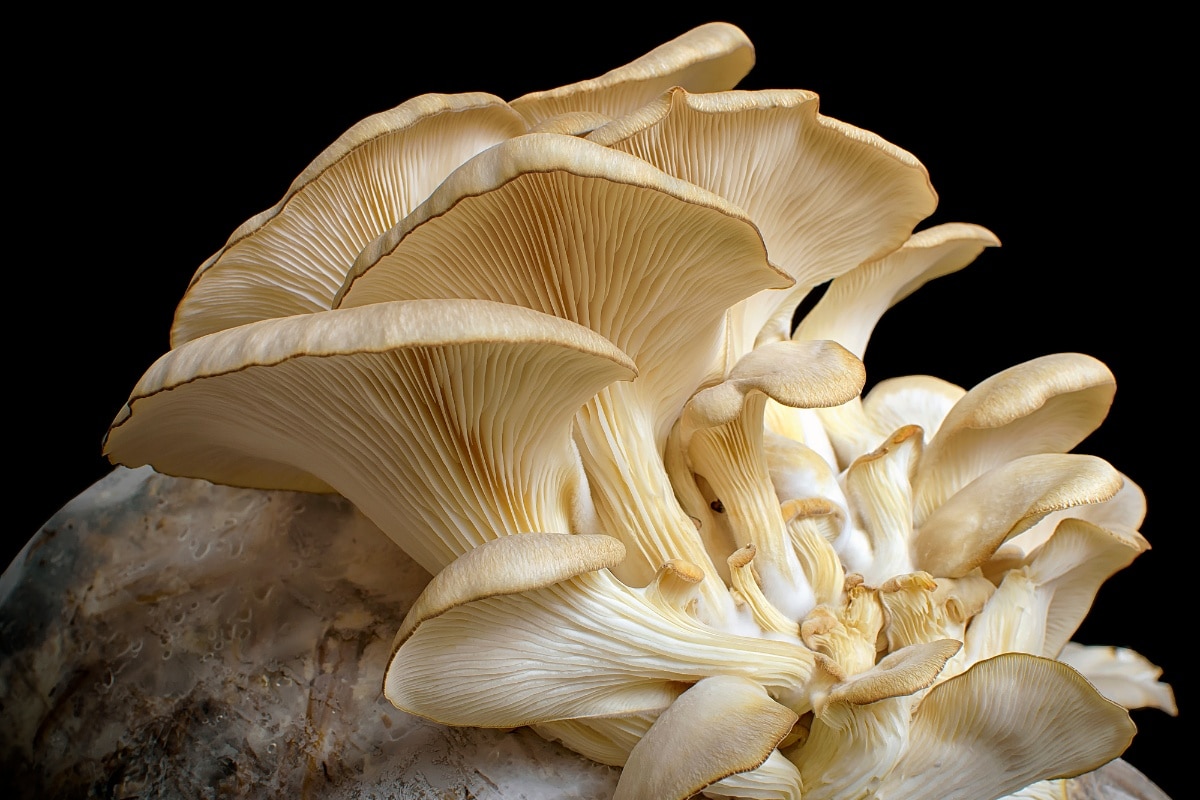
Oyster mushrooms have gained significant popularity in recent years due to their versatility and good flavor. These mushrooms can be found in many grocery stores, farmers’ markets, and specialty food shops throughout the year. They are one of the most commonly accessible gourmet mushrooms in many parts of the world. While oyster mushrooms are primarily available through cultivation, they can also be found in the wild for those interested in foraging.
The delicate, slightly sweet flavor and tender texture of oyster mushrooms make them incredibly useful in the kitchen. Oyster mushrooms can absorb a lot of water, so it’s best not to soak or strongly wash them. Cultivated oyster mushrooms are usually quite dry and can be quickly rinsed before use. Wild oyster mushrooms vary depending on the weather, but they might be soggy or super dry. If you do end up soaking or deeply washing them, dry sauté them before incorporating them into a dish.
They can be sautéed with garlic and herbs as a simple side dish or incorporated into pasta dishes. Oyster mushrooms also work well in stir-fries, soups, and risottos, where they absorb the flavors of the dish while contributing their own unique taste.
Oyster mushrooms can be battered and deep-fried to create crispy mushroom fritters. Grilling oyster mushrooms is another excellent option, as it enhances their meaty texture and imparts a smoky flavor. They are great at mimicking the texture of meat. They are often used as a substitute in recipes calling for shredded meat.
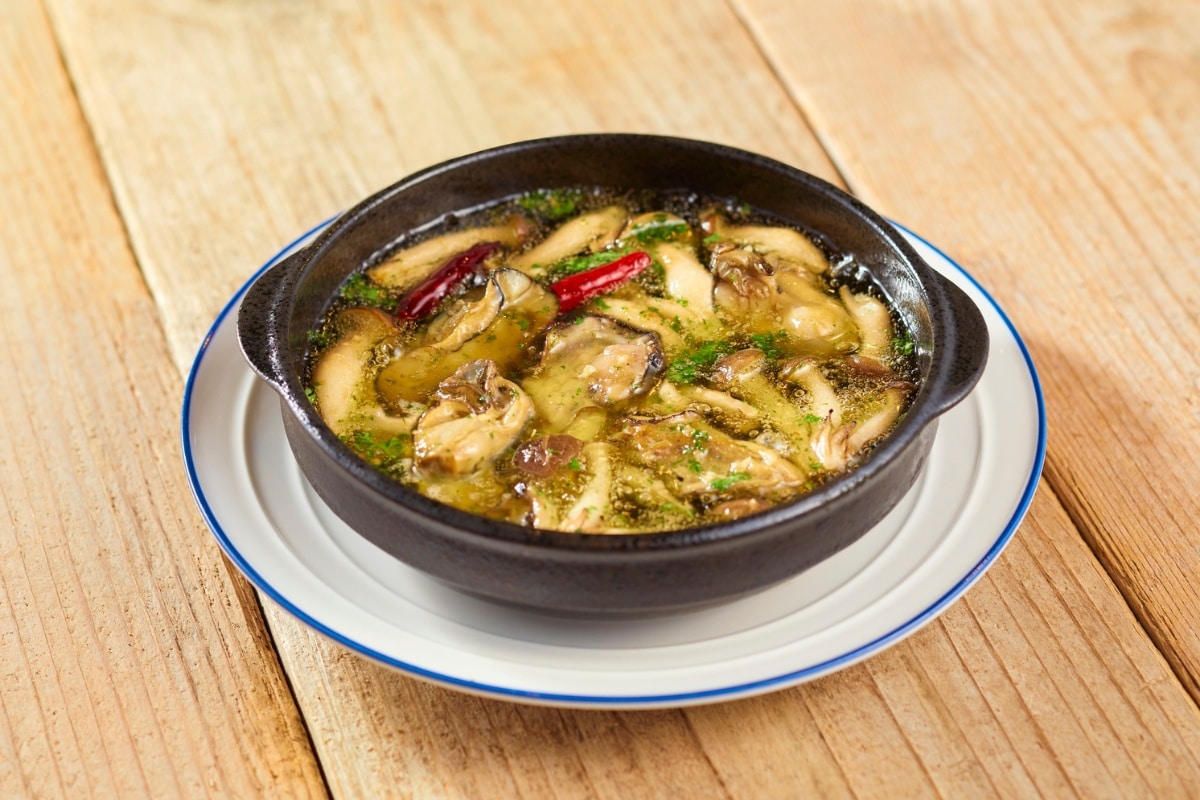
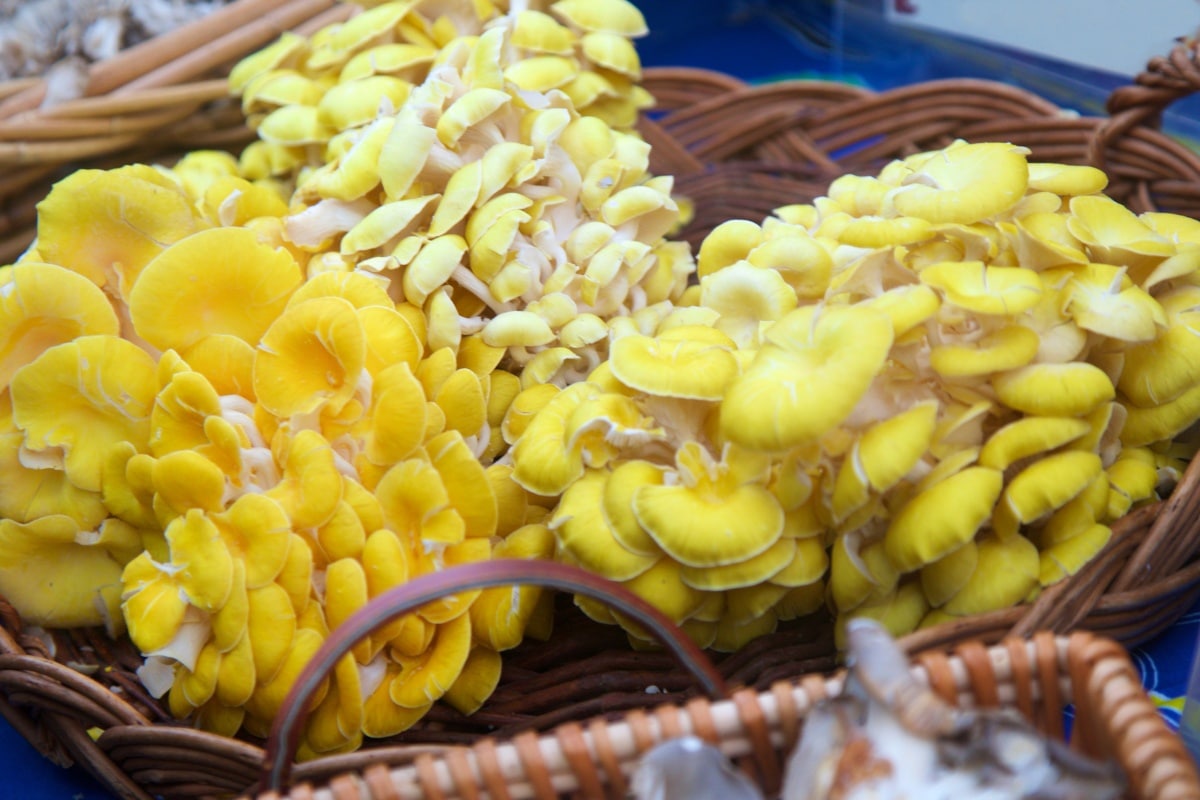
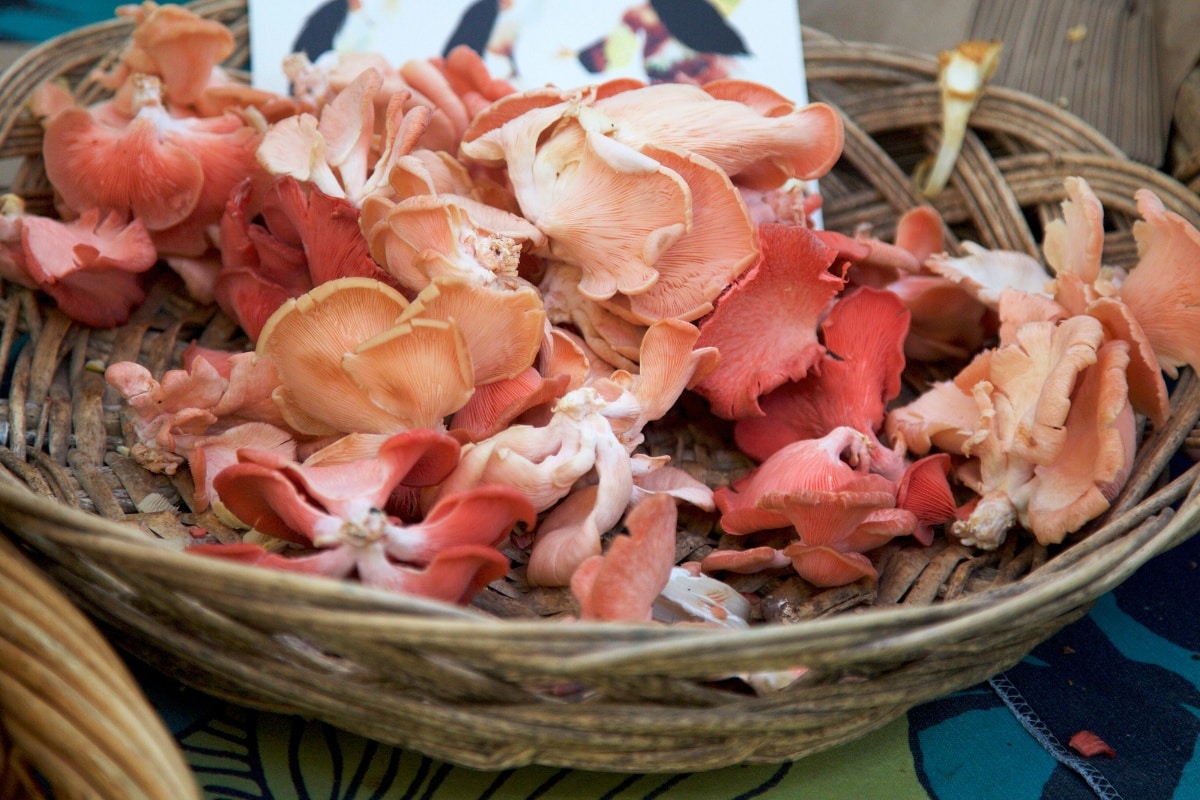
Porcini/King Bolete
Best For: Stir-frying, pan-frying, pasta dishes, polenta, omelets, grilling
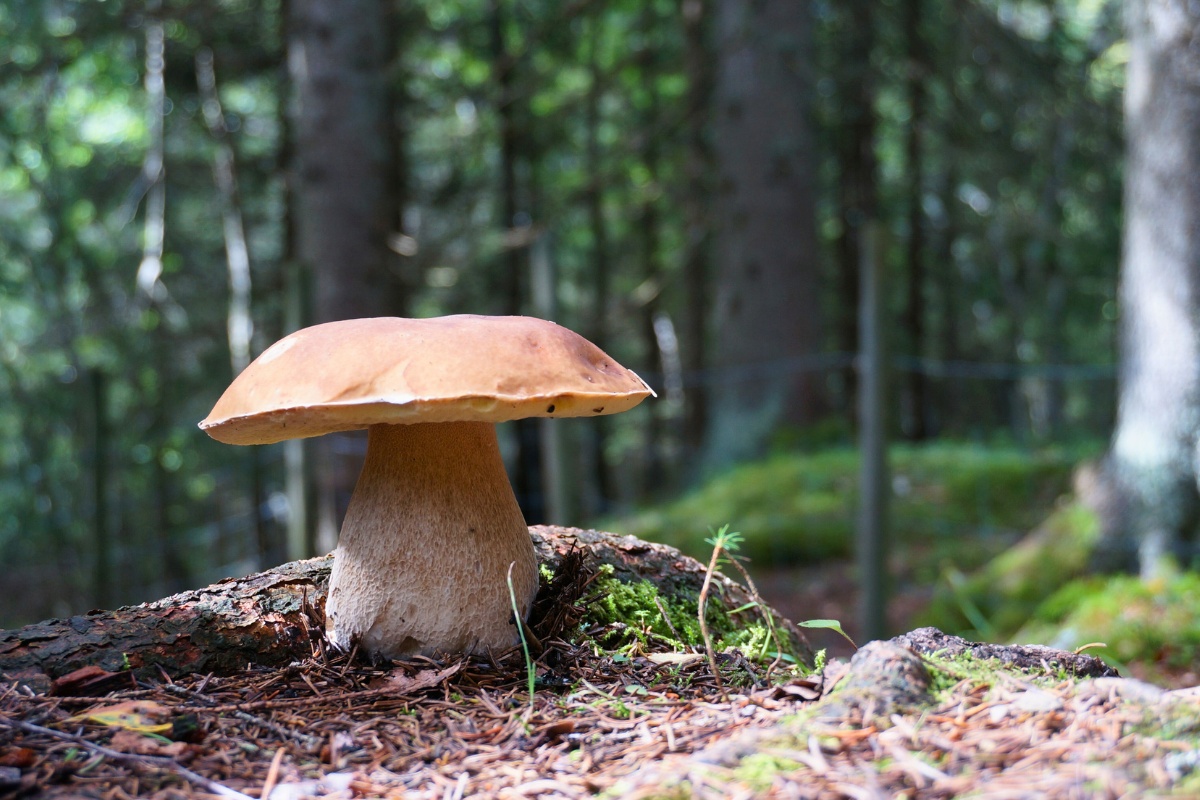
Porcini mushrooms, also called king boletes or cep, are valued for their rich, nutty taste and meaty texture. You can find these mushrooms mostly in the late summer and fall. Their availability can change based on where you live and the weather conditions.
Porcini mushrooms only grow in the wild. They grow in symbiotic relationships with certain trees, especially oak, pine, chestnut, and hemlock. While some efforts have been made to cultivate porcini mushrooms, success has been limited. Most porcini mushrooms available in markets are wild-harvested. They are often dried to preserve their flavor and extend their shelf life.
Porcini mushrooms have a robust, earthy, and nutty flavor and dense, succulent flesh. They usually don’t need much cleaning – a wipe with a wet towel is usually enough. Their pores are like sponges, so avoid soaking them.
The porcini flavor pairs well with pasta, risotto, and polenta. Porcini can be sautéed in butter or olive oil and served as a side dish or incorporated into omelets and frittatas. They also make an excellent addition to soups and stews.
For those lucky enough to find fresh porcini, a simple preparation yields the best results. Slice them thickly and grill or pan-sear with just a touch of oil, garlic, and herbs for their natural flavors to shine. Dried porcini are widely available and can be rehydrated and used in sauces or in stocks.
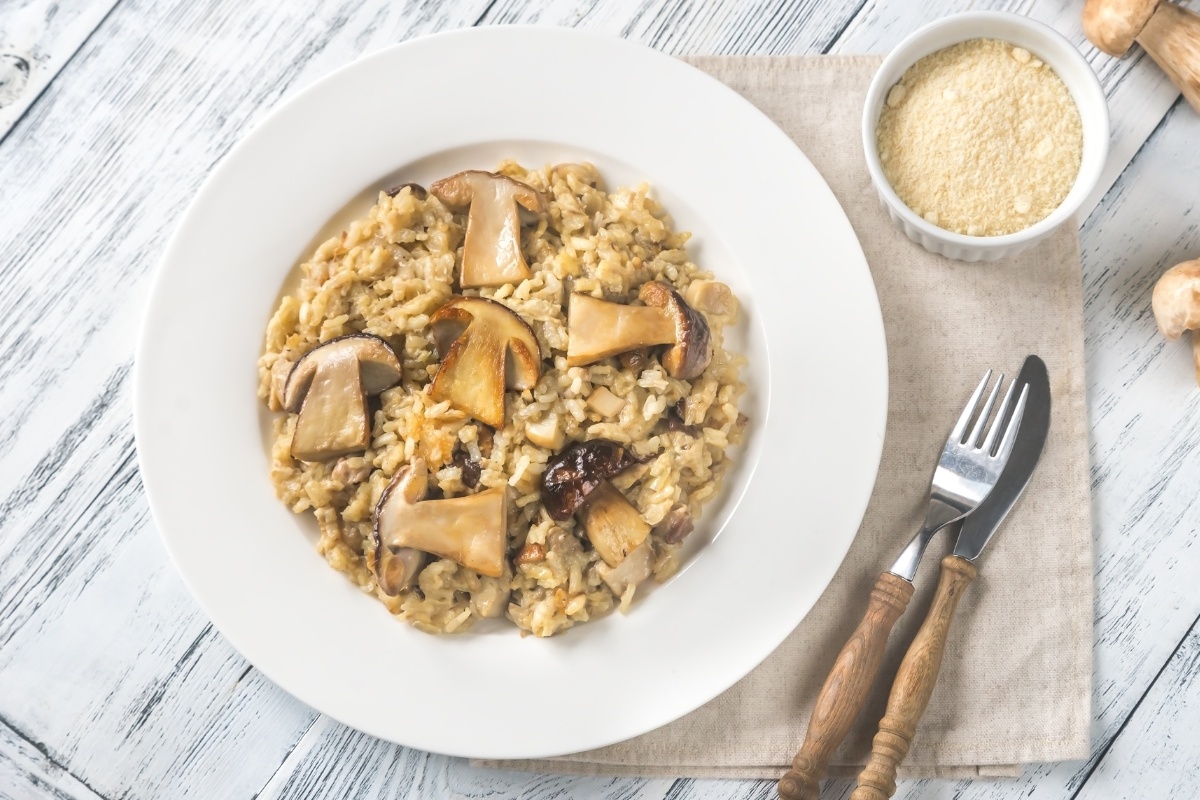
Shiitake
Best For: Pan-frying, soups, dumplings, meat substitute, stir-fries
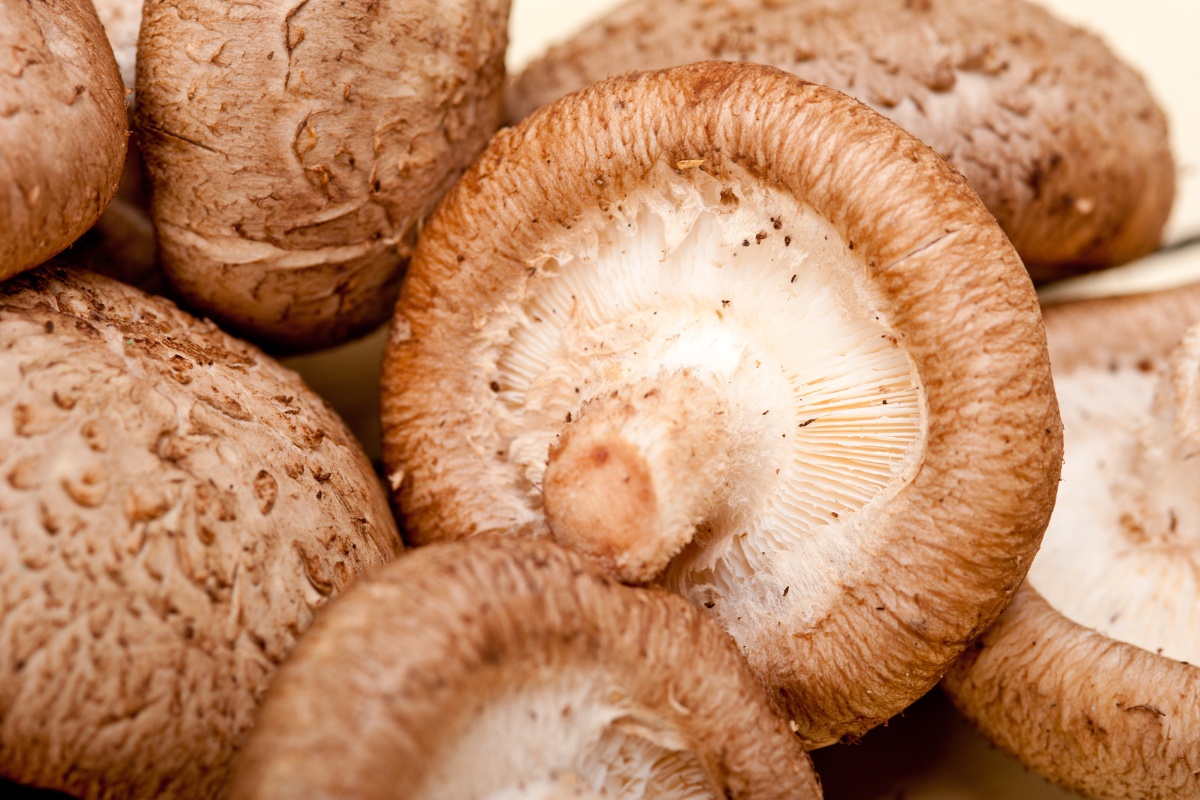
Shiitake mushrooms are among the most popular and widely available varieties worldwide. Native to East Asia, these mushrooms have gained global popularity due to their rich, savory flavor and numerous health benefits. Today, shiitake mushrooms can be found in many grocery stores, farmers’ markets, and specialty food shops across the country.
Shiitake mushrooms are available through both cultivation and wild foraging. Cultivated shiitakes are far more common in commercial markets, though. Cultivation of shiitake mushrooms has become widespread, with many countries producing them on a large scale. This controlled cultivation method gives a steady supply of shiitakes throughout the year, and they’re readily available to consumers regardless of season. While wild shiitake mushrooms do exist, they are less common and primarily found in their native habitats in East Asia.
Shiitake mushrooms are prized for their meaty texture and umami-rich flavor. They are usually quite clean in their packaging and don’t need a lot of cleaning. A quick rinse or brushing with a wet towel is usually enough.
Fresh shiitakes are excellent when sautéed with garlic and herbs as a side dish or incorporated into stir-fries, soups, and pasta dishes. Their robust flavor makes them an ideal meat substitute in mushroom burgers or as a filling for dumplings.
Dried shiitake mushrooms are also widely available and are valued for their intense flavor. They can be rehydrated and used in similar ways to fresh shiitakes. They’re especially prized for making rich, flavorful broths and stocks. In Japanese cuisine, dried shiitakes are a key ingredient in dashi, a fundamental stock used in many dishes. They also work well in risottos, gravies, and sauces, imparting a deep, earthy flavor to the dish.
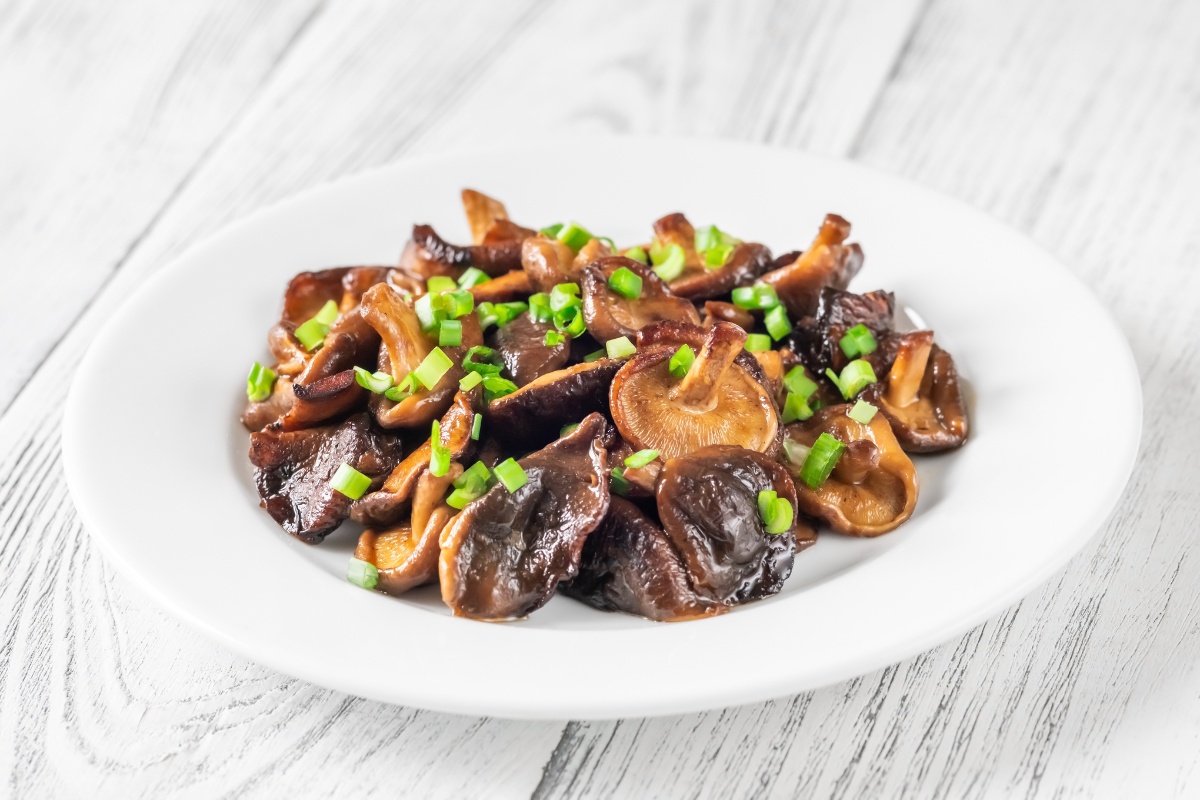
Chanterelles
Best For: Simple pan-fry, omelets, risottos, pasta dishes, pizza topping
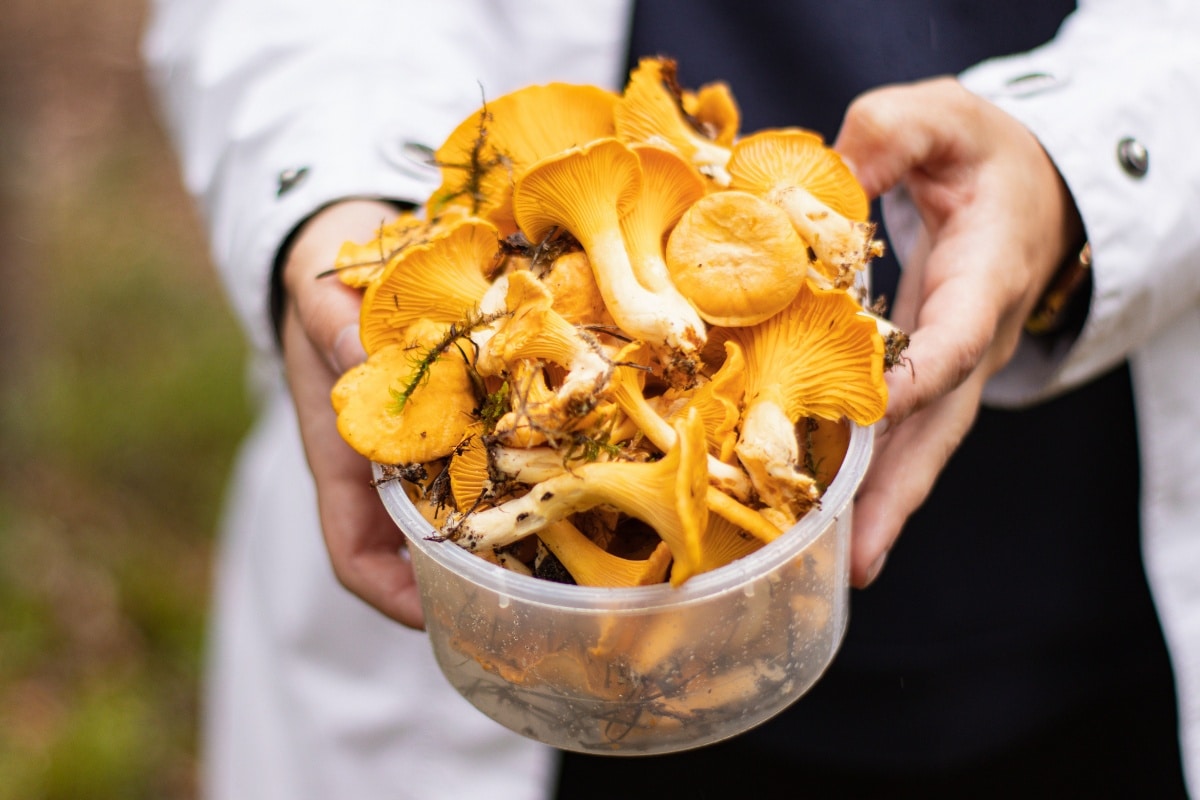
Chanterelles are prized wild mushrooms known for their distinctive golden color and fruity aroma. These mushrooms are only found in the wild, and their availability varies depending on the season and geographical location. In many parts of the world, chanterelles appear in late summer and early fall. In California and the PNW, though, they are late fall and winter mushrooms.
The availability of chanterelles is largely dependent on foraging. They are mycorrhizal mushrooms that create special relationships with specific tree species. This makes it challenging to cultivate them commercially on a large scale. While some small-scale cultivation efforts exist, the vast majority of chanterelles available in markets and restaurants are wild-foraged. Chanterelles usually appear in the same spots year after year, which gives some reliability to their availability.
The best options are to forage for them yourself or purchase them from local farmers’ markets, specialty grocery stores, or gourmet food suppliers during their peak season.
Chanterelles have a sweet apricotty-smell, delicate flavor, and meaty texture. They tend to absorb water but aren’t too spongy. It’s best to wipe them with a wet towel to get off dirt and debris. If you do end up soaking or washing them, dry sauté the mushrooms before incorporating them into a dish to get the excess liquid out.
One classic preparation is to simply sauté them in butter with a bit of garlic and fresh herbs like thyme or parsley. This allows the mushroom’s natural flavors to shine. Chanterelles also pair wonderfully with eggs and are excellent additions to omelets, frittatas, or scrambled eggs.
Chanterelles can be incorporated into risottos or pasta dishes, where their earthy flavor complements the creamy textures. They also work well in soups and stews by adding depth and complexity to the broth. Chanterelles can also be used as a topping for pizzas or flatbreads.
Preservation methods such as drying, freezing, and pickling extend the availability of chanterelles beyond their natural season. It is possible to find them outside their growing season in these forms. The best chanterelles, though, are fresh.
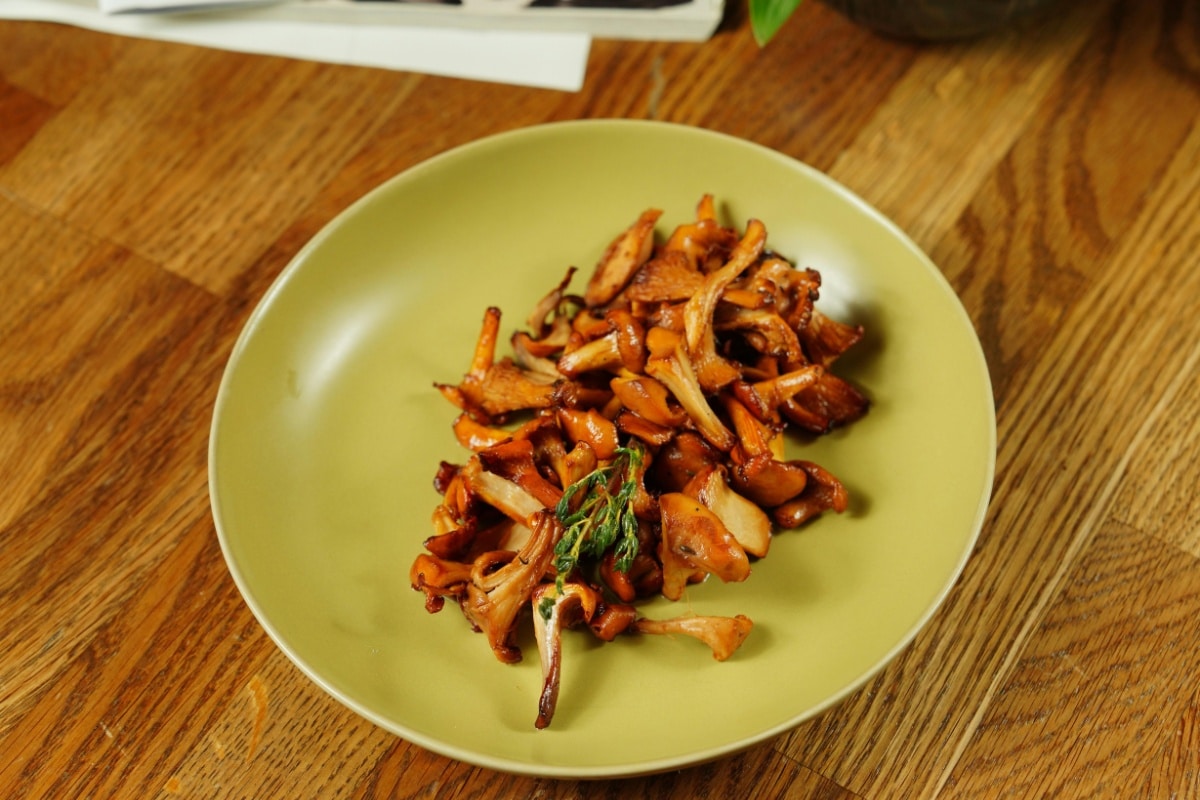
King Trumpet
Best For: Pan-frying, faux scallops, stir-fries, soups, hot pots, pasta dishes
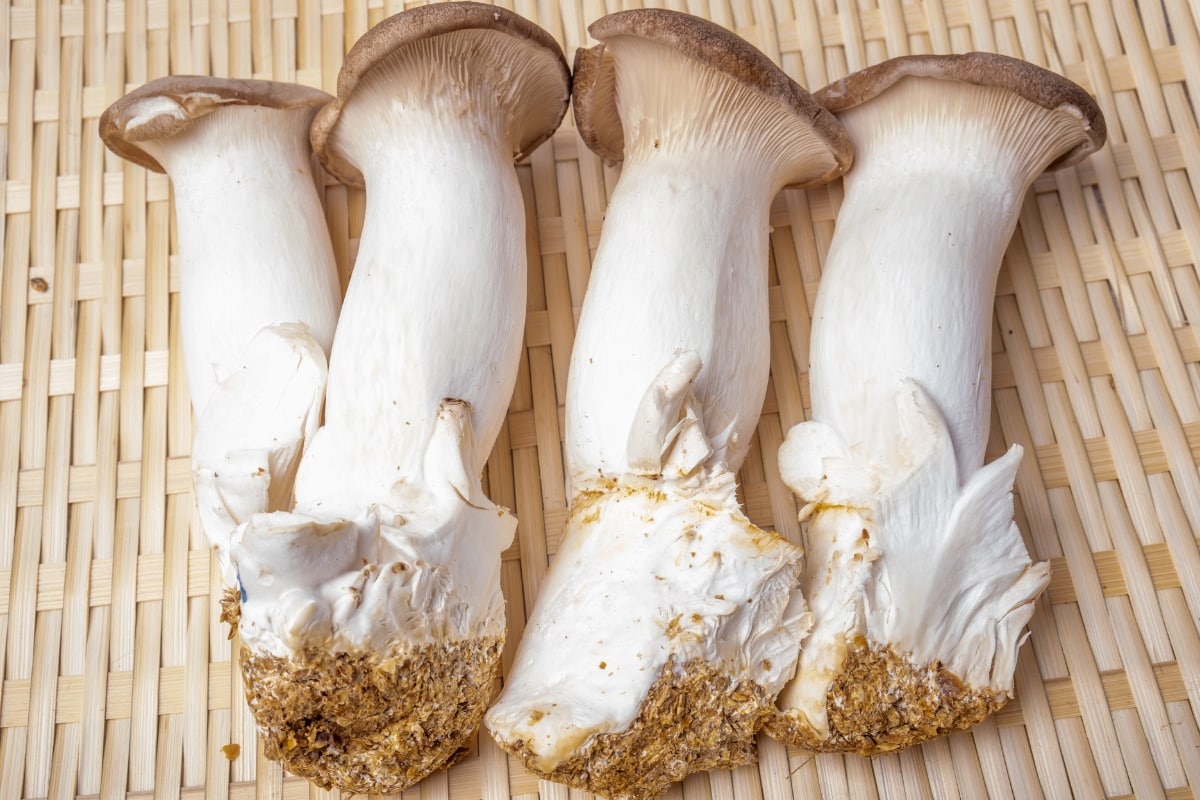
King Trumpet mushrooms, also known as King Oyster or Eryngii mushrooms, are primarily cultivated rather than wild-foraged. They are commonly found in specialty grocery stores, Asian markets, and even some mainstream supermarkets. These mushrooms are a relative of the oyster mushroom.
Many countries, including China, Japan, and parts of Europe and North America, now grow King Trumpet mushrooms. This means they are available for consumers all year round. While you can find wild King Trumpet mushrooms, they are rare and not usually sold commercially.
The firm, dense flesh and mild, savory flavor of king trumpet mushrooms make them an excellent choice for a variety of dishes. Cultivated king oysters are usually quite clean and just need a quick wipe with a towel.
A popular way to prepare them is by slicing them lengthwise and either grilling or pan-searing them. This enhances their meaty texture, which is reminiscent of scallops. You can marinate them beforehand, or simply season them with salt, pepper, and herbs.
Another fantastic way to prepare King Trumpet mushrooms is to use them as a meat substitute. Their substantial texture holds up well in stir-fries, where they can be cut into chunks and cooked with vegetables and sauces. They also make an excellent addition to pasta dishes, risotto, and soups.
In Asian cuisine, King Trumpet mushrooms are often used in hot pot dishes, sautéed with garlic and soy sauce, or added to broths and stews. Their ability to absorb flavors while maintaining their structure makes them a favorite ingredient in many traditional and modern Asian recipes.
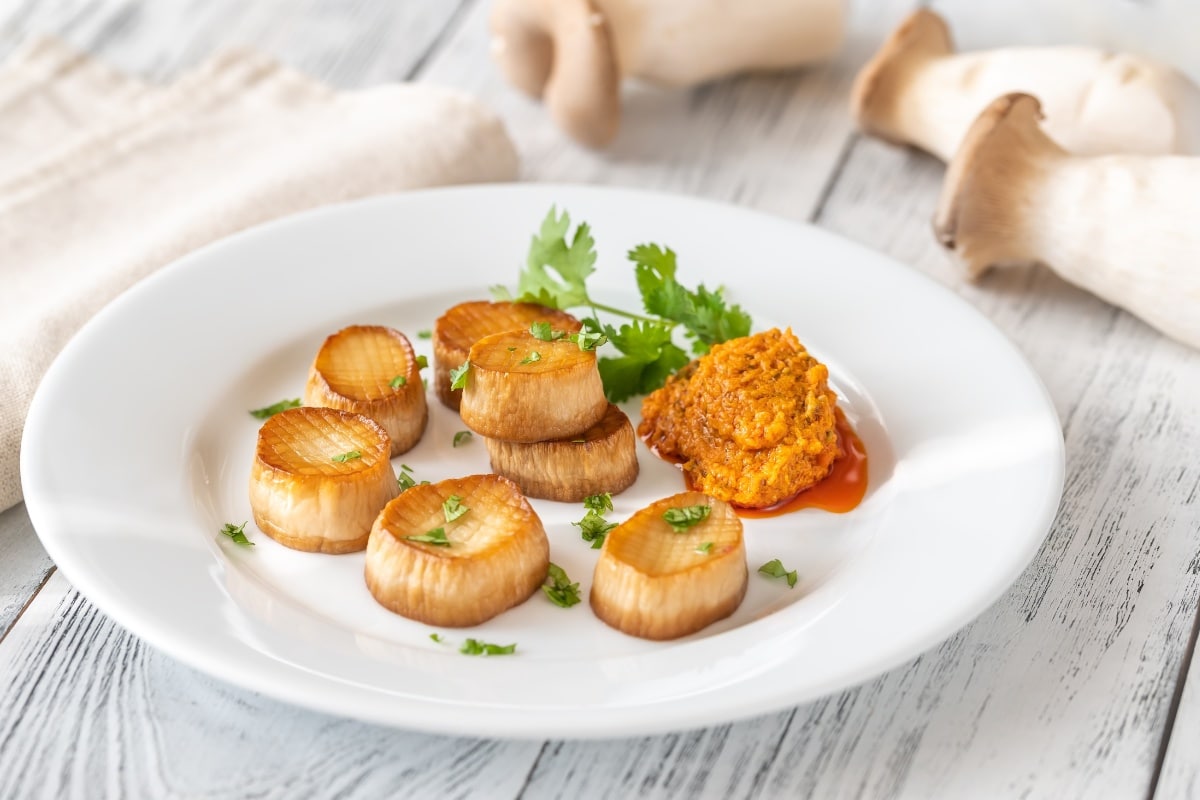
Morels
Best For: Light pan-frying, cream-based sauces, pizza topping, stuffed
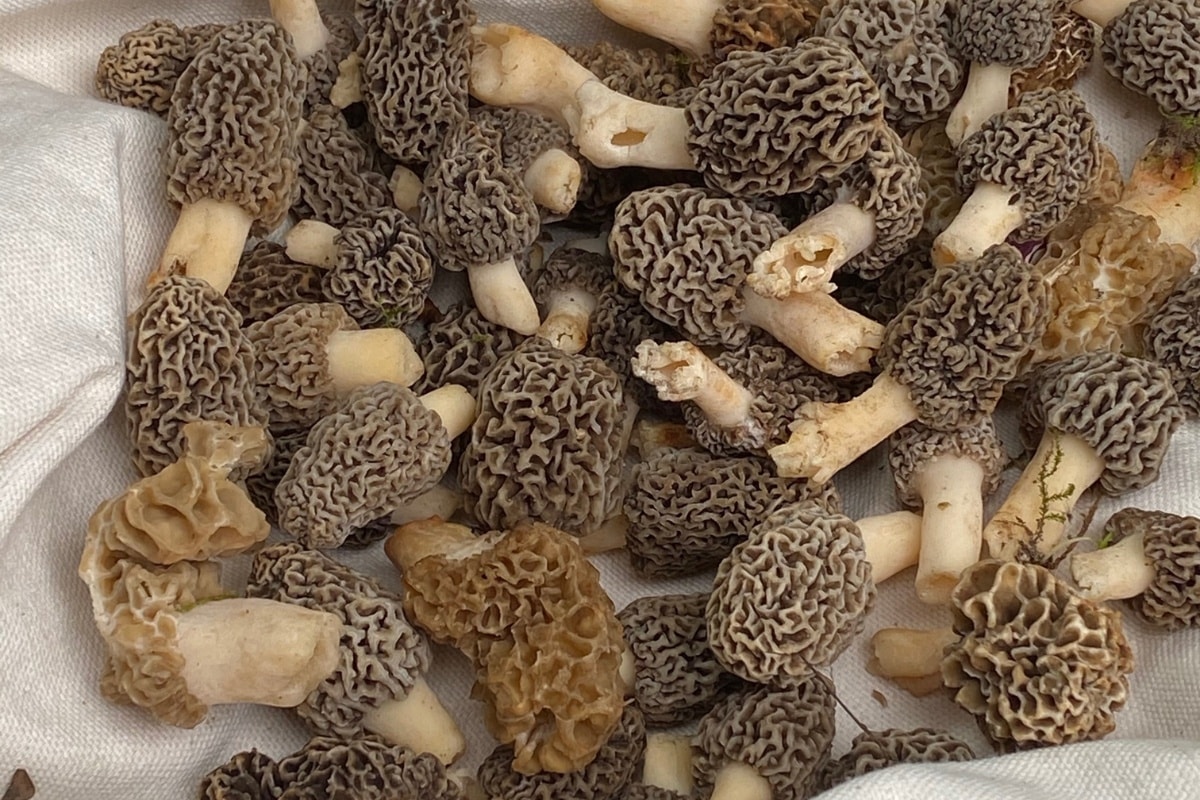
Morels are one of the most popular edible mushrooms. They have unique honeycomb-like caps and hollow stems. They are not widely available, which makes them highly sought after when they’re in season. Morels usually grow in the wild during spring, from late March to May. The exact timing depends on the region and weather conditions. They have a relatively short growing season, which adds to their allure and value. Morels are native to many temperate regions across North America, Europe, and parts of Asia.
While morels are predominantly foraged from the wild, there are recent developments in cultivation. Specifically, a few companies in China have figured out how to grow them. These morels are grown in greenhouses and shipped around the world. However, cultivating morels is still in the beginning stages and is challenging. The complex symbiotic relationship morels have with certain trees and specific soil conditions makes large-scale cultivation complicated. As a result, the majority of morels available in markets or restaurants are still sourced from wild foraging. This is especially true in North America.
In some regions, fresh or dried morels may be found at farmers’ markets, specialty food stores, or online gourmet food retailers during peak season. Many foragers and growers preserve their excess harvests, so dried morels are available year-round. However, the best morels are wild foraged in spring and are only available for a short time.
Morels are celebrated for their rich, earthy flavor and meaty texture. Their thin flesh holds a lot of moisture and can get a bit soggy. If they’re relatively clean, you can simply brush the dirt and debris off. It’s always good to cut them in half, too, to check if any bugs have taken up residence in their hollow center. Dirtier morels can be soaked (it doesn’t hurt them), but you’ll want to dry saute them before incorporating them into a dish.
They pair exceptionally well with spring ingredients. A classic preparation is to simply sauté them in butter with a touch of garlic and herbs. Morels are also excellent when incorporated into cream-based pasta dishes and risotto. They are also a great addition to rich sauces. Their hollow structure makes them perfect for stuffing with cheese or other savory fillings before baking. Morels are often dried and then rehydrated for use in soups, stews, and sauces, where they impart a deep, umami flavor to the dish.
**Do not eat these mushrooms raw! They must be cooked properly!**
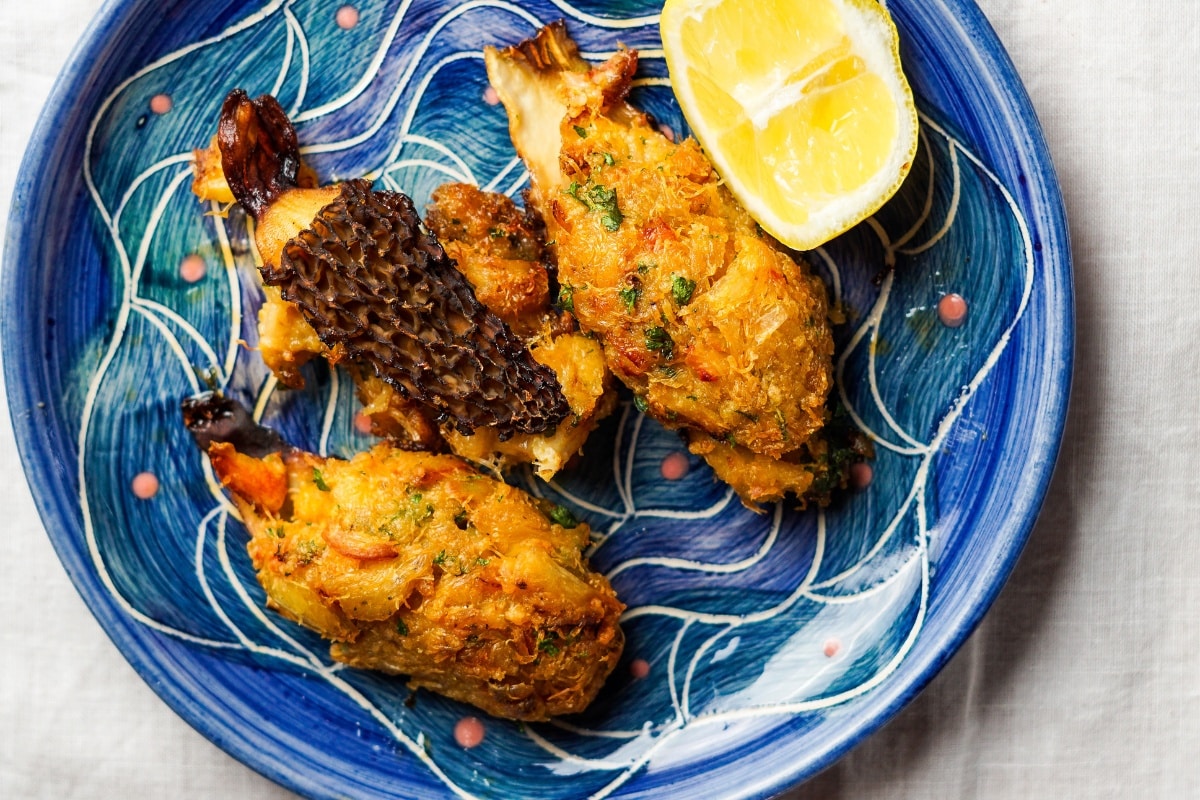
Maitake (Hen of the Woods)
Best For: Hearty stews, pan-frying, fried “chicken” substitute, jerky, pasta dishes
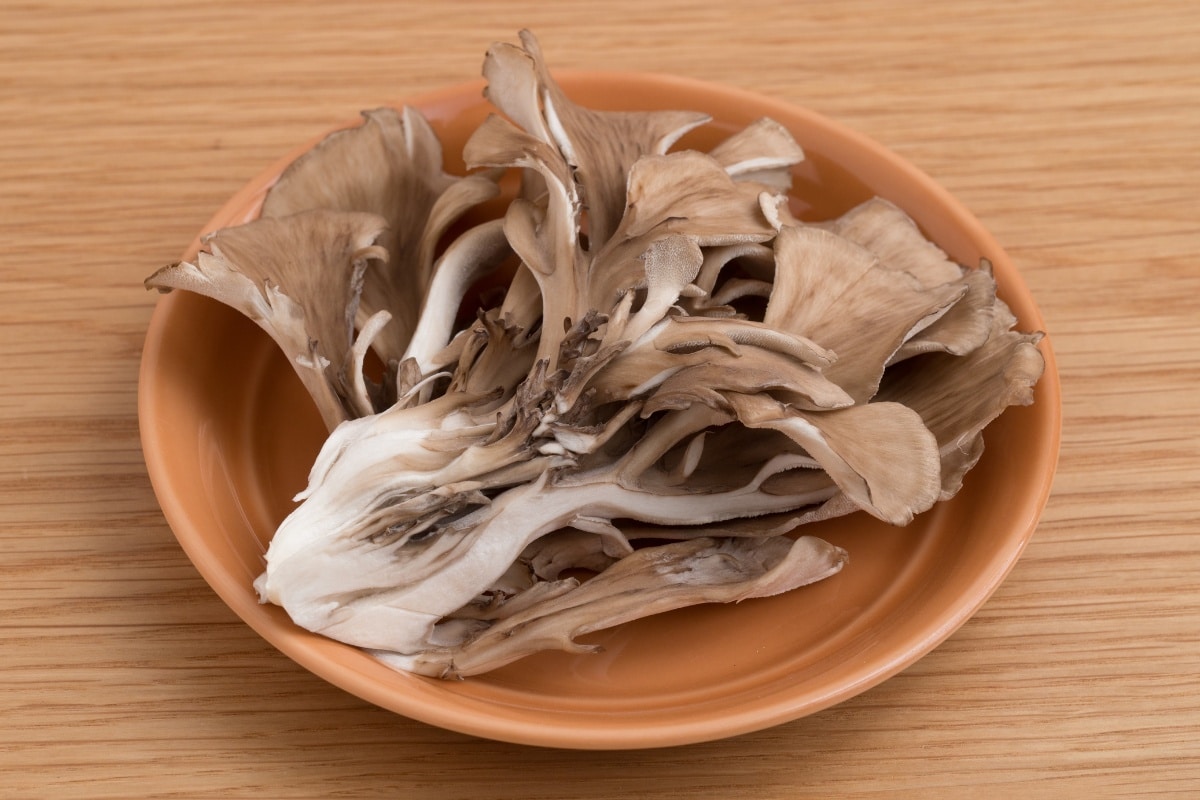
Maitake mushrooms, also known as “hen of the woods,” have become increasingly common due to their robust flavor and excellent texture. These mushrooms are native to temperate forests in North America, Europe, and Asia, where they grow at the base of oak trees. In the wild, they can be found during late summer and fall. They usually grow in the same location year after year.
Maitake can be found in the wild, and it is also now widely cultivated. Many gourmet grocery stores and farmers’ markets offer cultivated maitake. Some specialty mushroom growers even offer maitake growing kits for home cultivation. If you live in any areas where these grow wild, go out around old-growth oak trees in the fall, and you might find yourself a treat!
Maitake mushrooms are prized for their rich, earthy flavor and meaty texture. These mushrooms don’t hold a lot of moisture like button mushrooms; they’re much denser. Wild specimens usually are quite dry and need a lot of cleaning.
Cultivated specimens will be cleaner but also usually on the dry side. This means you don’t have to worry about them getting too soaked during cleaning. Wash the mushrooms under running water until any dirt is gone and they’re clean, and then pat dry.
One popular cooking method is to tear the mushroom into smaller pieces and sauté them in butter or olive oil until crispy on the edges. This simple preparation allows the mushroom’s natural flavors to shine. Add some fresh garlic and salt, and the dish will be quite tasty.
Maitake also works well in soups and stews because it adds depth and umami to broths. Breading and frying maitake pieces creates a crispy, savory treat. The mushroom’s robust flavor also makes it an excellent addition to pasta dishes, risottos, or as a meat substitute in vegetarian recipes.
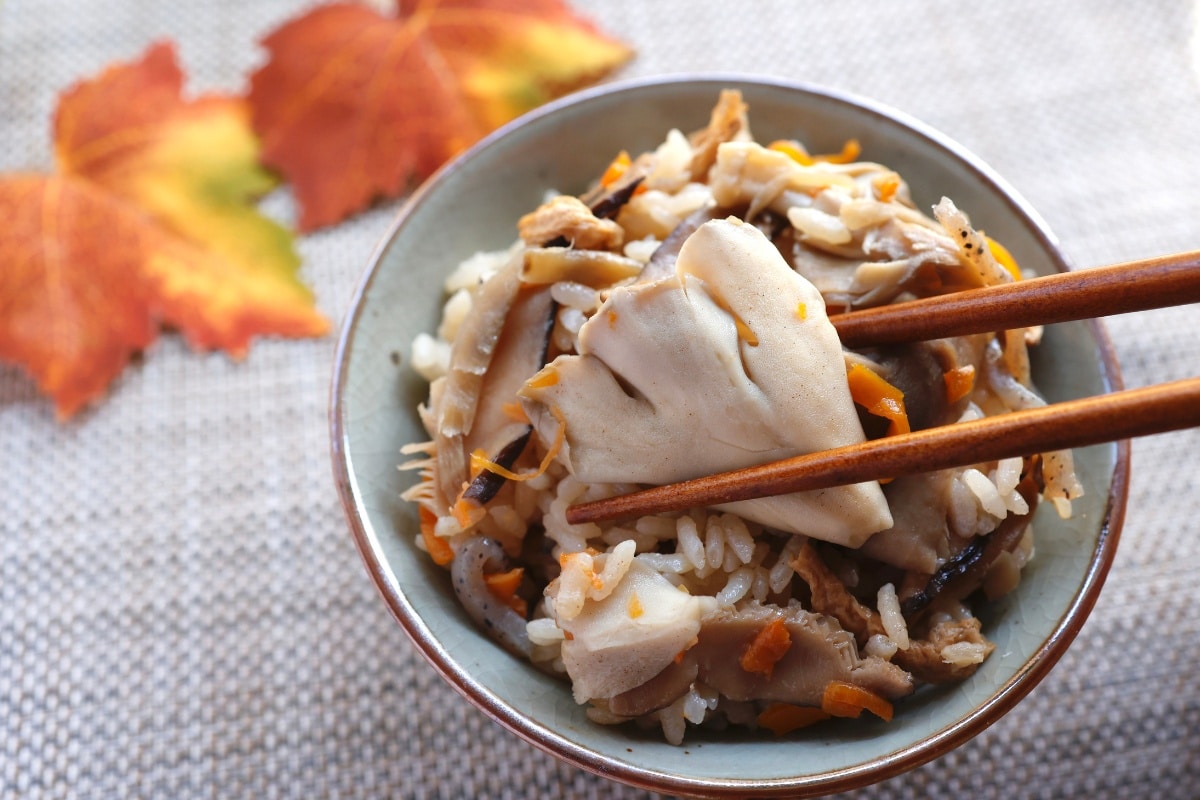
Black Trumpet
Best For: cream sauces, light pan-frying, pizza topping, pasta dishes, eggs, risotto
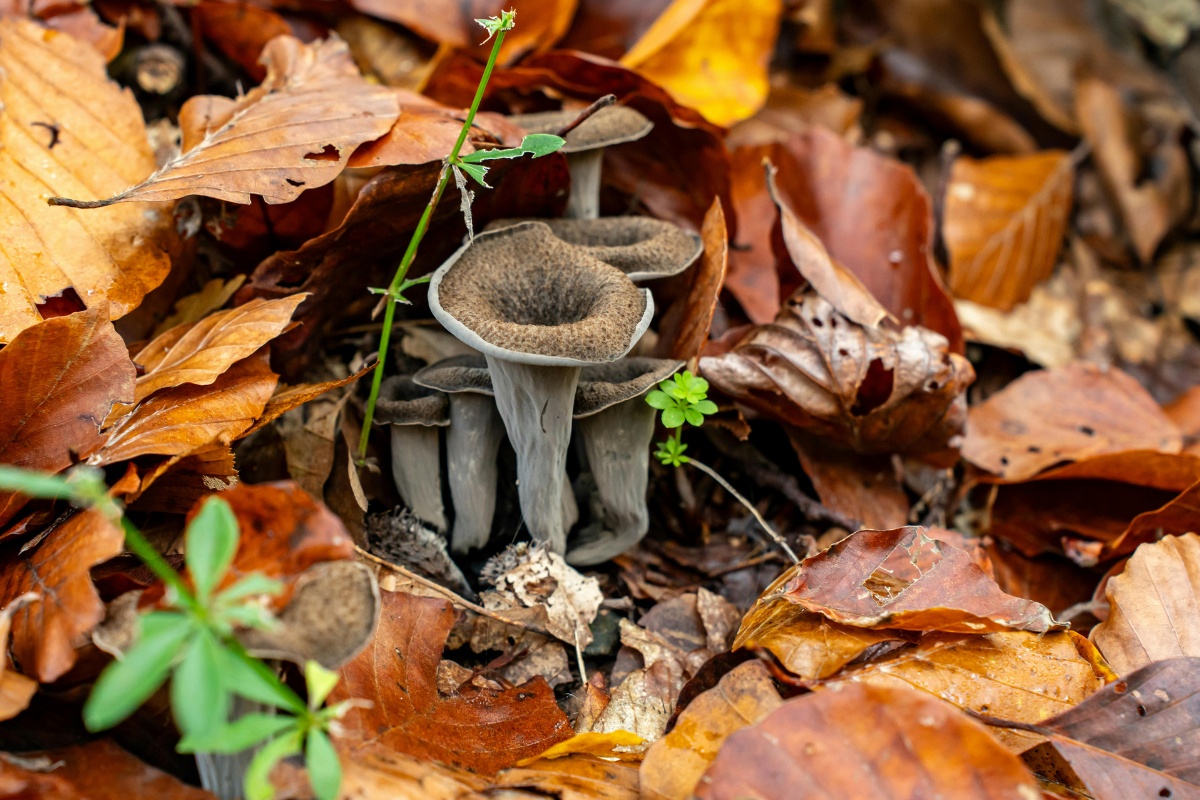
Black Trumpet mushrooms, also known as Horn of Plenty or Trompette de la Mort, are a delicious and somewhat elusive fungus in the culinary world. Black Trumpets are found in the wild and not cultivated. They are notoriously difficult to cultivate commercially due to their specific growing requirements and symbiotic relationship with certain tree species.
Foragers typically find these mushrooms in hardwood forests, particularly near oak and beech trees, during the late summer and fall months in North America. Locating Black Trumpet mushrooms in the wild can be challenging, even for experienced mushroom hunters. Their dark color and tendency to grow in clusters on the forest floor make them easy to overlook.
Black Trumpet mushrooms are prized for their rich, smoky flavor and delicate texture. Their thin flesh does not absorb much water, so you can soak or rinse them without concern. Pat them dry before using.
They have a complex taste profile that is often described as earthy, fruity, and reminiscent of black truffles. These mushrooms are incredibly versatile in the kitchen. They pair exceptionally well with eggs, pasta, risotto, and meat dishes.
They can be used as a flavorful addition to sauces, soups, and stews or added to omelets and quiches. Black Trumpets also work well in cream-based pasta dishes because they add depth and complexity.
Black Trumpets can be dried for long-term storage. Dried Black Trumpets retain their flavor exceptionally well and can be rehydrated when needed.
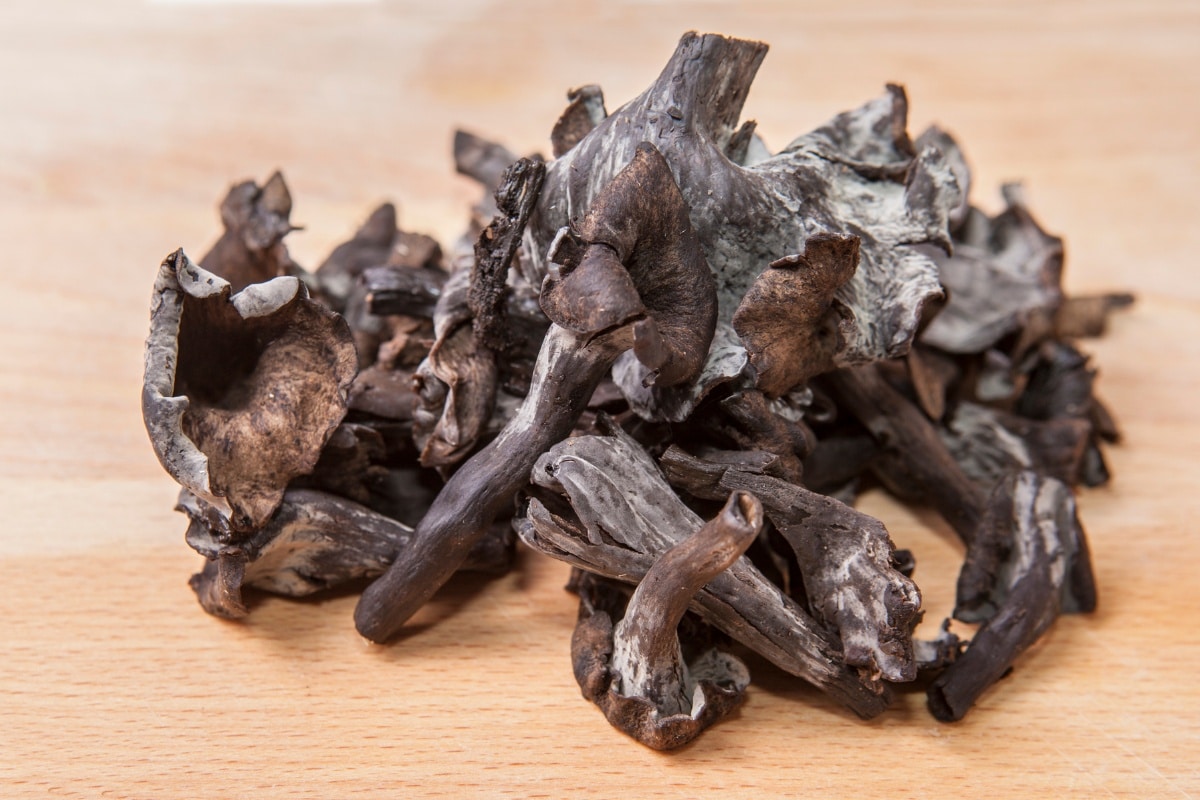
Enoki
Best For: Stir-fries, hot pots, meat substitute, fritters
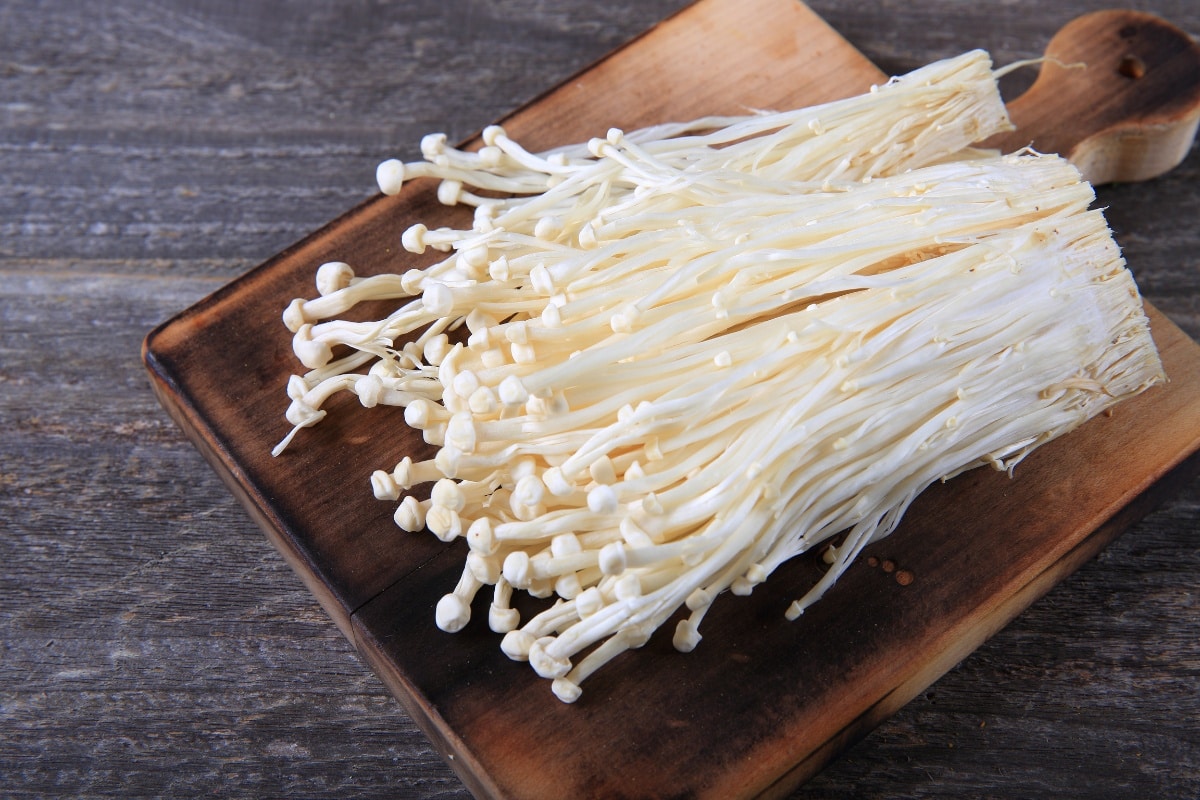
Enoki mushrooms, also known as Enokitake, are delicate, long-stemmed mushrooms with small caps. They are particularly popular in East Asian cuisines but have gained more global popularity in recent years. Their availability has increased significantly in grocery stores, specialty food shops, and Asian markets across North America.
Cultivated Enoki mushrooms are often sold in clusters and packaged in plastic bags or containers. Wild foraging for Enoki is possible, but you have to be very diligent about distinguishing them from potentially poisonous look-alikes. Cultivated Enoki is a safer and more readily available option for most people.
Enoki mushrooms have a mild, slightly fruity flavor that complements a wide range of dishes. They usually just need a quick rinse before preparation. Enoki are usually added at the last minute to maintain their delicate texture.
These mushrooms are popular in Japanese cuisine as a component of nabemono (hot pot dishes) and as a garnish for other dishes. In Korean cooking, they’re often used in bulgogi (marinated beef) dishes. Enoki can serve as a meat substitute in certain recipes because it adds texture and umami flavor to plant-based meals.
Many people eat Enoki raw, and technically, it is okay to do that. They’re not poisonous. However, due to frequent listeria problems from suppliers, we always cook these and never eat them raw.
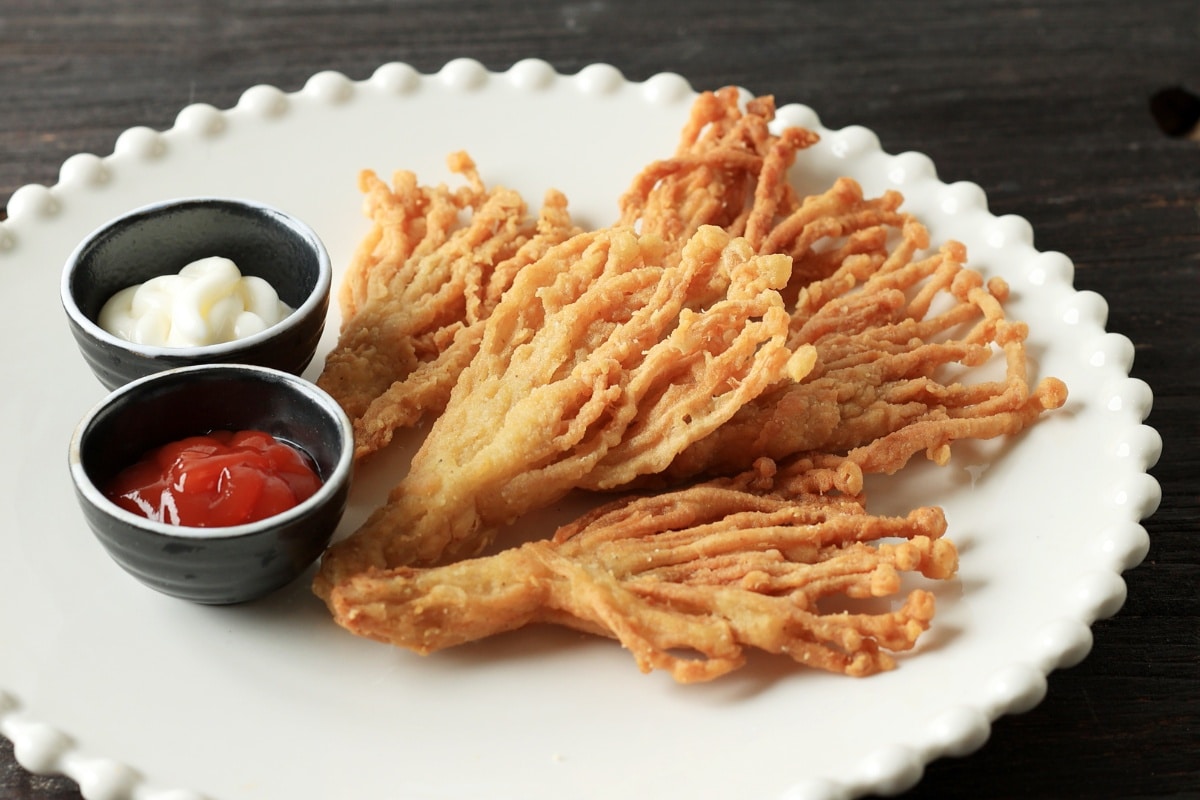
Specialty Mushroom Preparation Techniques
Clean your mushrooms just before use. Use a damp cloth or soft brush to remove dirt. For particularly dirty specimens, a quick rinse under cold water followed by immediate drying in a salad spinner works excellently. While some advise against washing mushrooms, there is no widespread right or wrong on this issue. The best cleaning technique varies by species. Some mushrooms are sponges, others are not. And, there is always the option to dry sauté the mushrooms before adding them to a recipe. This removes excess moisture and concentrates flavor.
Specialty mushrooms have higher perishability rates than common varieties. It’s best to use them within 5-7 days after purchasing them.
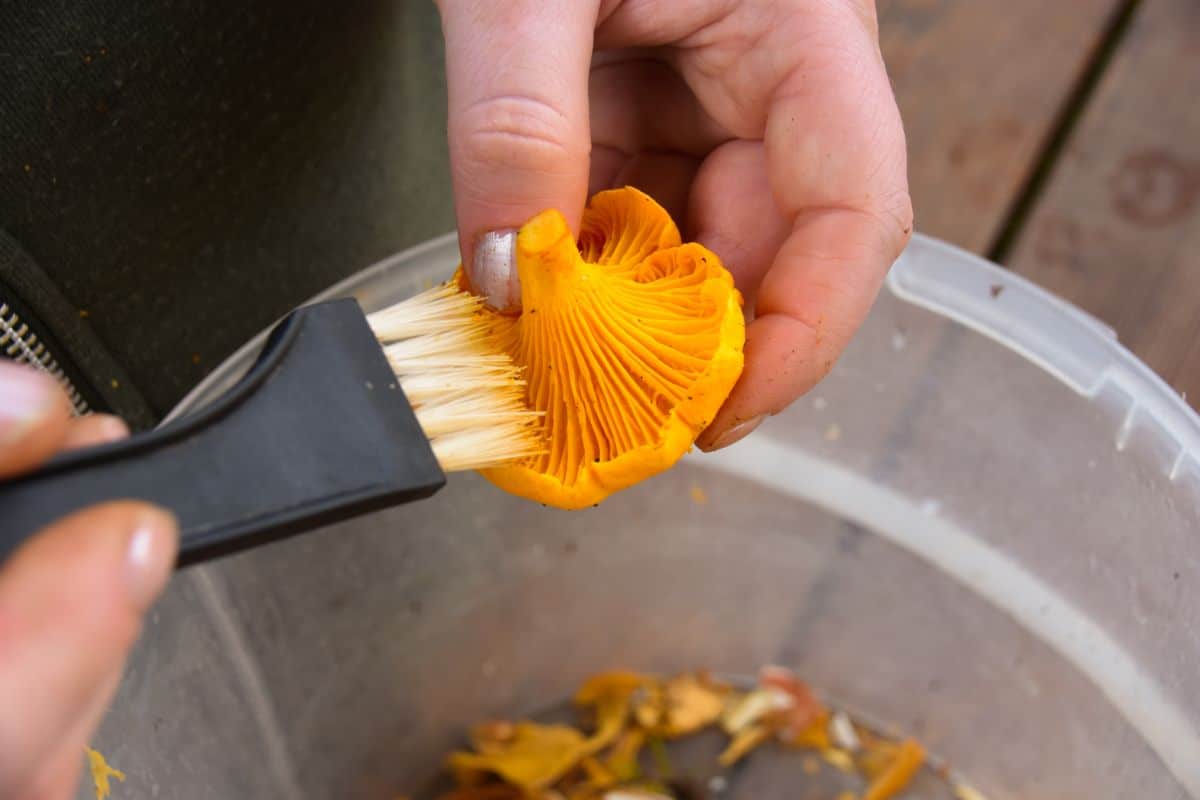
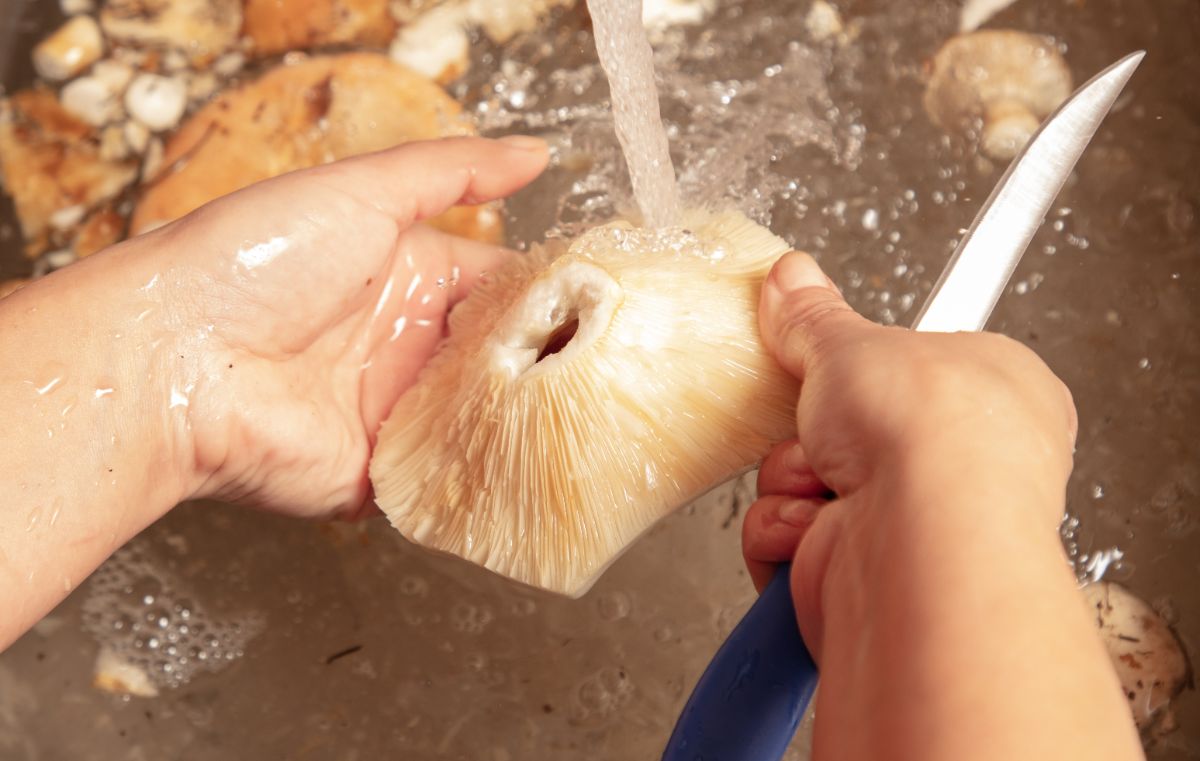
Basic Cooking Methods for Specialty Mushrooms
Dry sautéing is the most versatile method for cooking specialty mushrooms. Start with a heavy-bottomed pan over medium-high heat. Do not add oil immediately. Place the mushrooms in a single layer, leaving space between pieces to prevent steaming. Soon after, they’ll release their natural moisture. Once the water evaporates, add butter or oil to achieve a golden-brown exterior.
Roasting is another excellent dry-heat option. Set your oven to 375°F and spread mushrooms on a parchment-lined baking sheet. This temperature allows plenty of time for flavors to concentrate. After 15 minutes, drain any released liquid – this step reduces total cooking time by 15% and improves browning.
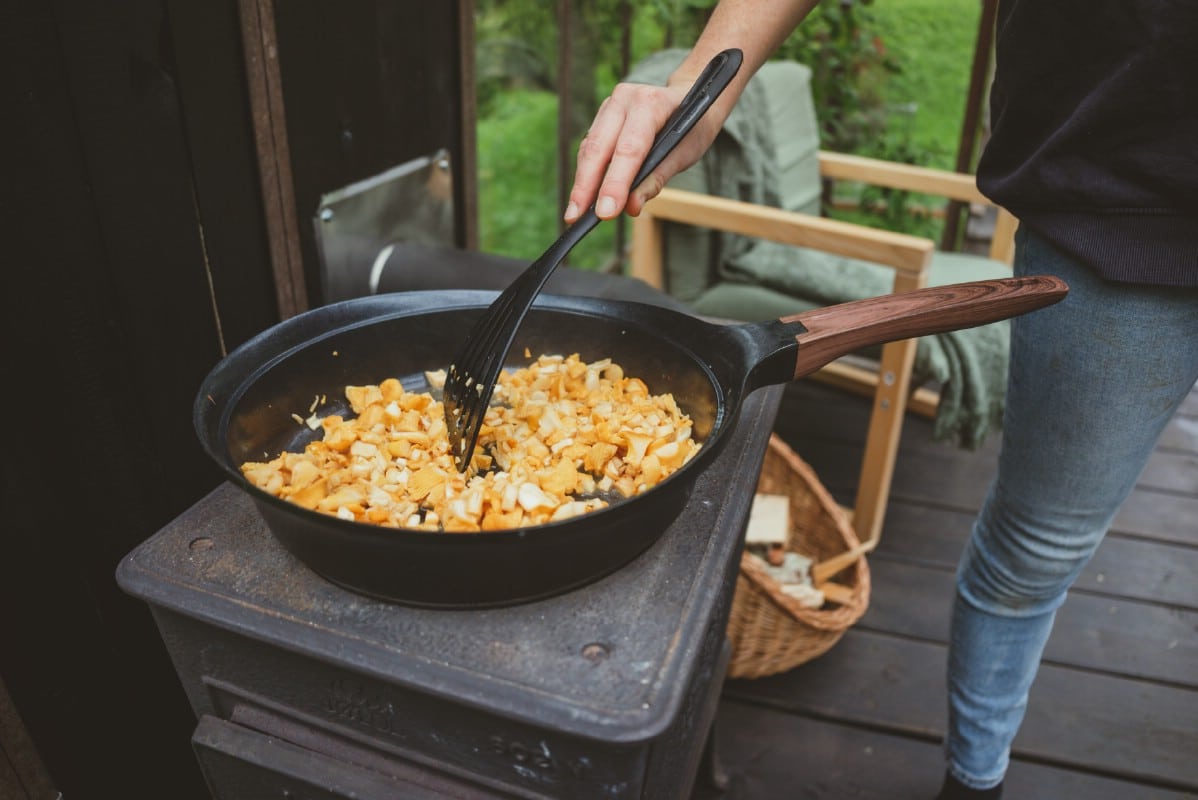
Grilling adds a smoky dimension. Brush them lightly with oil and season just before placing them on the grill. Otherwise, they might become too wet and steam rather than char.
Braising creates tender, flavorful results, primarily with heartier varieties. Begin by sautéing mushrooms in butter until they release their moisture. Afterward, add wine or broth and simmer until the liquid reduces by half – this takes approximately 25 minutes. This method works exceptionally well with porcini, shiitake, and other dense mushrooms.
The cooking time varies based on the mushroom’s size and density. Generally, thick, hardy specialty mushrooms need longer cooking times than delicate ones. Although timing varies, most mushrooms show doneness when they develop a golden-brown color and release their natural moisture.
Fat plays a vital role in mushroom cooking. Since mushrooms absorb considerable amounts of fat, you’ll need to add enough to coat the pan generously. This ensures proper browning and flavor development while preventing sticking.
For the best results with fresh specialty mushrooms, use dry cooking methods to remove excess water and concentrate the flavors. If you don’t cook out the excess moisture, the mushrooms won’t turn golden-brown exterior or concentrate their flavors fully.
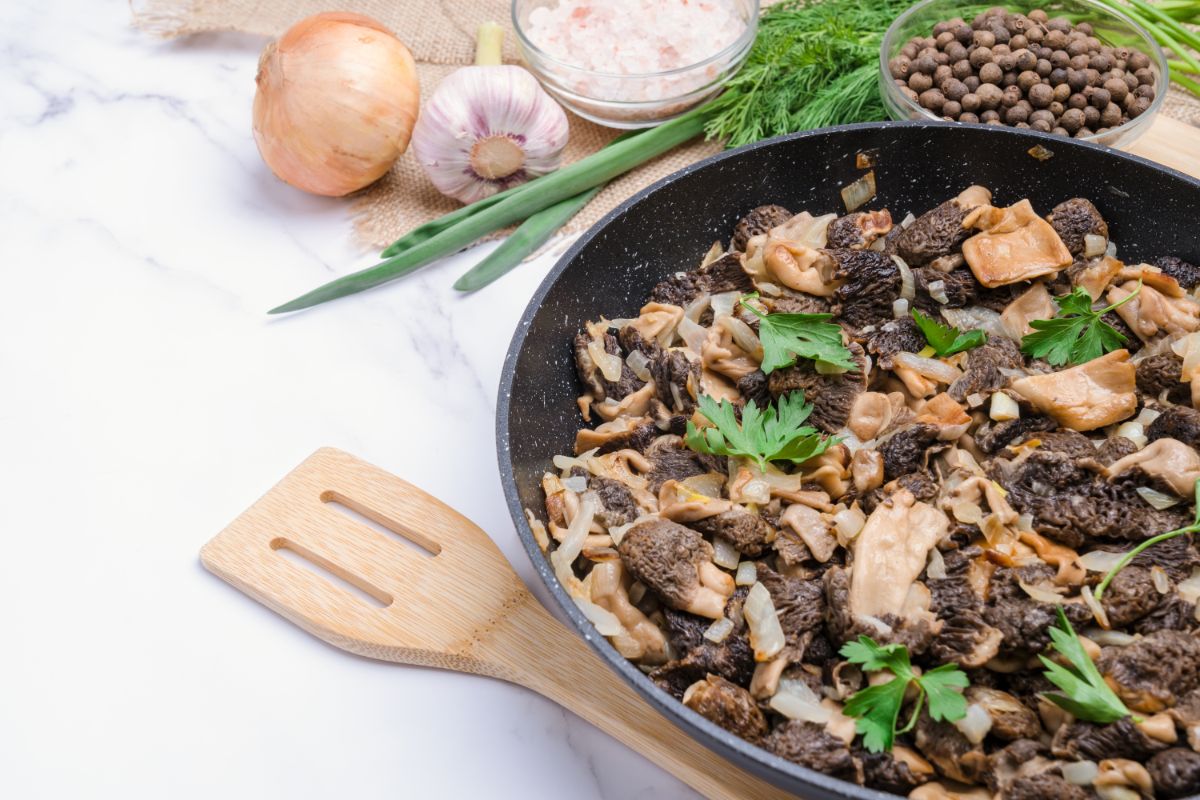
Common Questions About Specialty Mushrooms
What’s the best way to store specialty mushrooms?
Store mushrooms in a paper bag in the refrigerator to maintain proper air circulation. This helps absorb excess moisture and prevents spoilage. Use them within a week of purchase for optimal freshness. Do not store specialty mushrooms in plastic as this makes them turn slimy and decompose quicker.
What’s the ideal cooking method for specialty mushrooms?
Sautéing is versatile and brings out great flavor. Use medium-high heat and cook the specialty mushrooms in a single layer until they release their moisture. Once the water evaporates, add butter or oil to get a golden-brown exterior.









Leave a Reply